Modeling the Dynamics of the Jebel Zaghouan Karst Aquifer Using Artificial Neural Networks: Toward Improved Management of Vulnerable Water Resources
Abstract
1. Introduction
| Modeling Category | Model | Authors | Advantages | Disadvantages | Limitations |
|---|---|---|---|---|---|
| Statistical and Regression Models | Logistic Regression Model (LRM) | [43] | Handle both continuous and discrete variables | Oversimplify karst complex relationships | Clear linear relationship |
| Conceptual Models | KARSTMODGARDENIARCD Seasonal | [9,14] | Simplify the hydrological process | Inadequate for spatial heterogeneity | Simple systems |
| Data Driven and Machine Learning Models | Data Mining Models (ANFIS, Fuzzy Logic, ANNs) | [2] | Flexible models Nonlinear Relationships | Data-intensive can be subjective | Data dependency (limited/noisy data) |
| ANNs (MLP/CNN/LSTM /NARX) | [24] | Efficient in learning spatial/temporal features | Require substantial computational resources | Need for high-quality and quantity of data | |
| Support Vector Regression (SVR) | [44] | Effective in high-dimensional spaces | Sensitive to hyperparameter settings | Careful tuning of parameters | |
| Physical-Based/Hydrodynamic Models | MODFLOW | [45,46] | Handle groundwater flow processes | May require simplification of karst features | Porous media flow |
| KarstFLOW | [47] | Directly simulate physical processes | Require detailed and hard-to-obtain system data | High computational demand | |
| Empirical and Stochastic Models | Empirical Models | [48] | Simple to implement; requires less data | Limited predictive capability, Restrictive applicability | Reproducibility |
| Stochastic Models | [49] | Uncertainty and variability handling, limited data, constraints on time, and few computational resources. | Numerous hypotheses on karst network configuration Complex to set up and interpret | Replicability |
2. Materials and Methods
2.1. Study Area
2.1.1. Geological Context, Aquifer Geometry
- Small Zaghouan, the source of Ain Haroun;
- The transmission station massifs (Kef El Orma, Kef El Blidah, and Jebel Stâa), the largest compartment, feeding major springs such as the Water Temple (Nymphée), Aïn Ayed, and Aïn Oued El Guelb;
- The Great Peak massif, which gives rise to the Sidi Medien spring.
2.1.2. Water Resources
2.2. Historical Data Collection and Rescue
2.3. Data Preprocessing
2.3.1. Rainfall
2.3.2. Temperature and Pressure
2.3.3. Discharge at Nymphée Spring
2.4. Hydrodynamic Characterization of Karst Through the Discharge at Nymphée
2.4.1. Characterizing Flow Regime Using the Ranked Method
2.4.2. Estimating Memory Effect Using Autocorrelation of Discharge
2.4.3. Estimating Lag Time Using Cross Correlation and Significance Test Between Rainfall and Discharge
- Cross correlation
- Significance testing
2.5. ANN Modeling Approaches
2.5.1. Models Architectures
- MLP
- MLP model for daily forecasting consists of an input layer with 348 neurons, connected to a first dense layer of 115 neurons activated by ReLU. A second dense layer expands this representation to 182 neurons, again activated by ReLU. After this, a dropout layer (rate determined by Bayesian optimization) is included to mitigate overfitting. Finally, the output is generated through a dense layer with a single neuron, providing the predicted discharge value.
- MLP model for weekly forecasting starts with an input layer of 54 neurons feeding into a dense layer of 206 neurons with ReLU activation. A subsequent dense layer reduces dimensionality to 81 neurons. Similarly to the daily model, a dropout layer is applied here for regularization. The output layer is again a dense layer with one neuron, yielding the weekly discharge forecast.
- CNN
- CNN model for daily forecasting consists of an initial 1D convolutional layer (Conv1D) with 119 filters and a kernel size of 3, followed by a MaxPooling1D layer to reduce temporal dimensionality. Subsequently, a dropout layer is introduced to mitigate overfitting. The output from dropout is flattened and passed through a dense layer comprising 73 neurons (activated with ReLU), followed by a final dense layer with a single neuron outputting the forecast discharge.
- CNN model for weekly forecasting follows a similar but adjusted structure, starting with a Conv1D layer featuring 152 filters (kernel size of 3). A subsequent MaxPooling1D layer reduces feature size, followed by dropout. The flattened output is then processed through a dense layer containing 154 neurons with ReLU activation. Lastly, a dense output layer with a single neuron provides the predicted weekly discharge (Figure 12).
- LSTM
- Daily forecasting model begins with an LSTM layer that accepts input sequences of shape (115, 3), producing an output sequence of 58 time steps, each with 128 features. A Dropout layer is subsequently applied to reduce the risk of overfitting. The resulting sequence is then flattened and processed by a dense layer comprising 73 units with ReLU activation. Finally, a single-unit dense layer provides the predicted daily discharge.
- weekly forecasting model employs a similar structure, initiating with an LSTM layer that processes input sequences of shape (17, 3) and outputs a sequence of 9-time steps with 128 features each. Following dropout regularization, the output is flattened and passed through a dense layer containing 154 ReLU-activated units, culminating in a single-unit dense layer that generates the weekly discharge prediction.
2.5.2. Hyperparameter Tuning and Evaluation
- observed value at time step i;
- simulated value at time step i;
- : Mean of observed values
- r: Pearson correlation coefficient between observed and simulated values
- α: Variability ratio (standard deviation ratio)
- β: Bias ratio (mean ratio)
- : Predicted discharge at time t
- f: Model function trained to map inputs to discharge
- : Input feature vector at time t − Xi
- : Rainfall at time t − Xi
- : Temperature at time t − Xi
- : Pressure at time t − Xi
- Xi: Time shift (lag) used in the sequence
2.5.3. Data Splitting Strategy
- Test set (1915–1920, ~10%): This initial period, untouched by model training, was exclusively used to evaluate model predictive capabilities on completely unseen data.
- Validation set (1921–1927, ~10%): Immediately following the test period, this set was utilized for early stopping and hyperparameter tuning to prevent overfitting.
- Training set (1928–1944, ~80%): The most recent period, encompassing significant events including drought episodes and the construction of galleries in 1928 and 1944, was reserved for training the neural networks. This period was selected deliberately to capture the aquifer’s hydrodynamic responses under specific varying stresses.
3. Results
3.1. Data Pre-Processing
3.1.1. Rainfall
3.1.2. Temperature and Pressure
3.1.3. Discharge
3.2. Hyperparameters
3.3. Performance by Model and Temporal Scale
3.3.1. MLP
3.3.2. CNN
3.3.3. LSTM
3.3.4. Overall Performance
4. Discussion
- Limit intensive pumping during low-flow periods by adapting abstraction volumes and establishing seasonal withdrawal quotas with stricter regulation during droughts.
- Guide withdrawals and predict long-term impacts through regular piezometric monitoring of water levels in wells and spring discharges, together with karst-specific hydrogeological models.
- Enhance artificial recharge through rainfall infiltration by developing controlled infiltration systems, and by preserving natural recharge to maintain storage.
- Diversify water supply sources to reduce pressure on the karst aquifer.
5. Conclusions
Author Contributions
Funding
Data Availability Statement
Acknowledgments
Conflicts of Interest
Appendix A
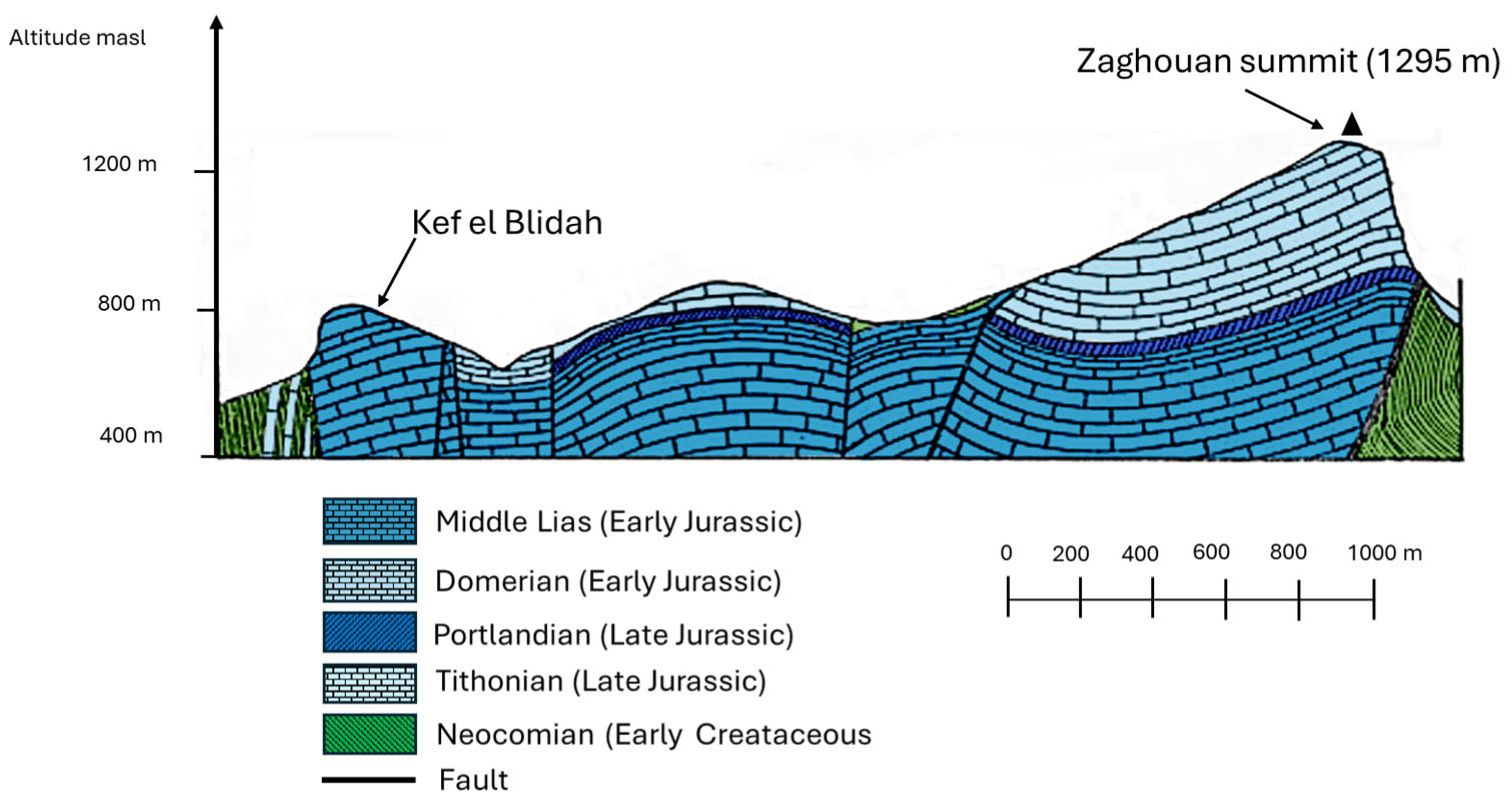
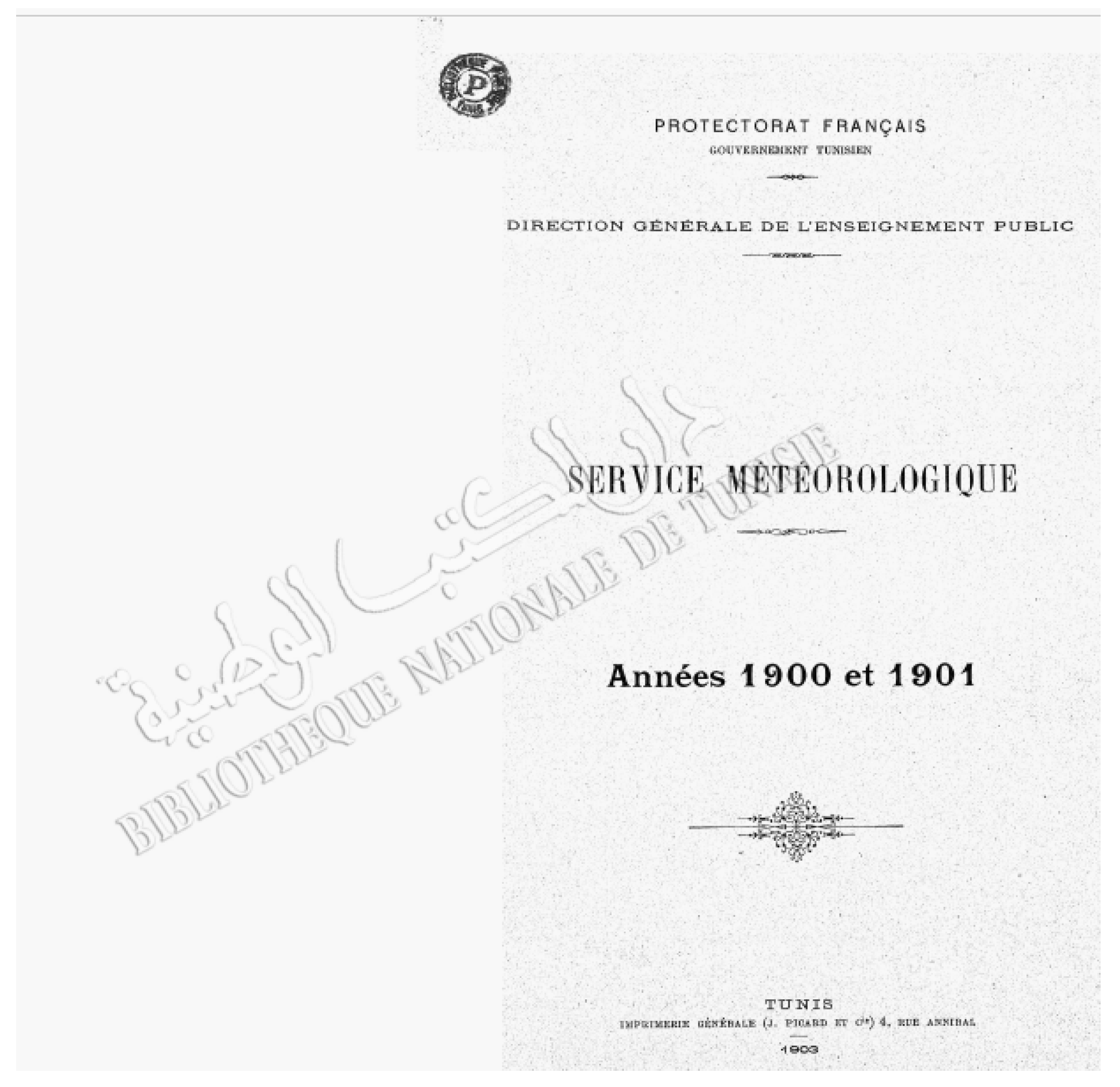

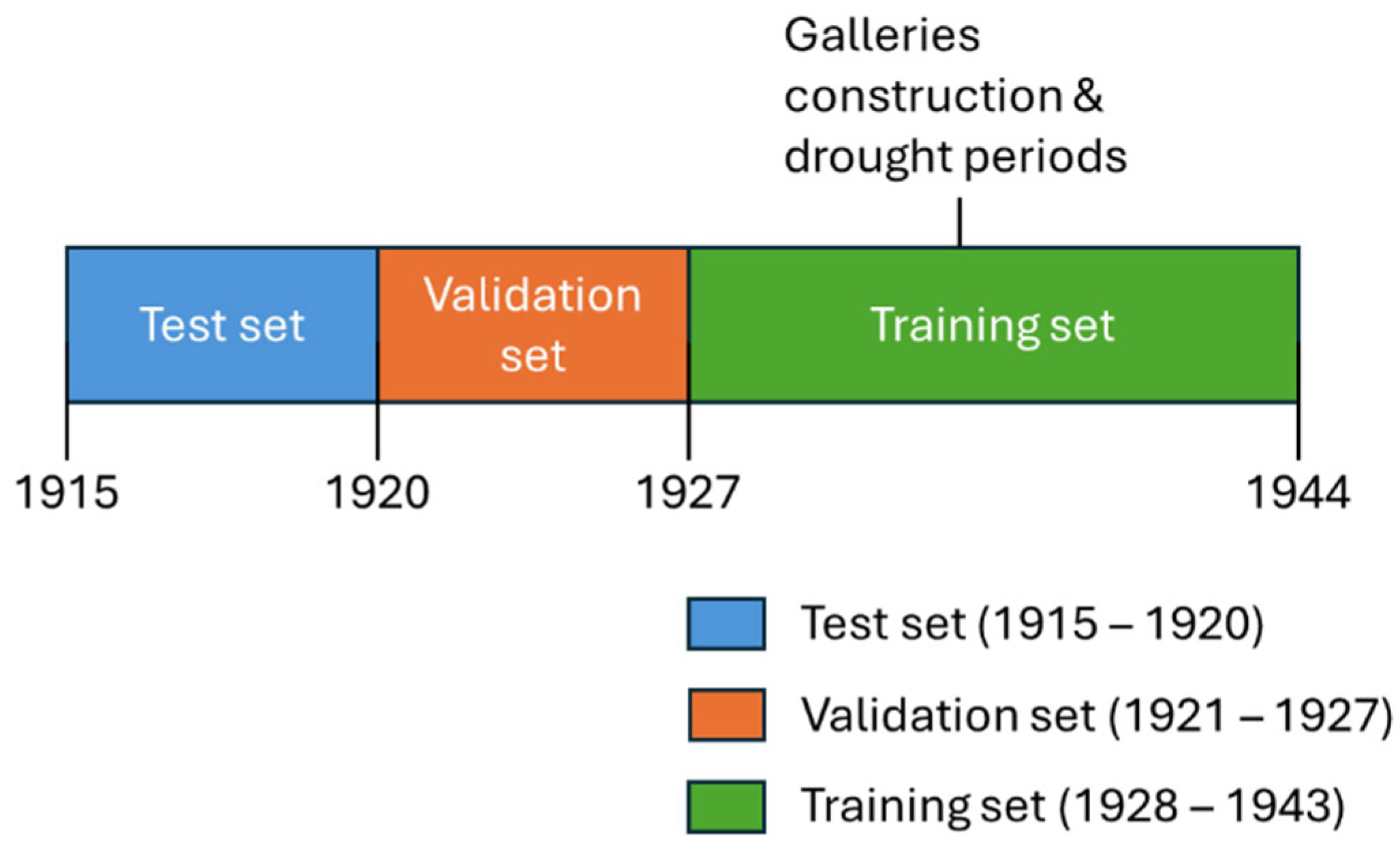
| Rainfall (mm/year) | Zaghouan Contrôle | Zaghouan SM |
|---|---|---|
| Minimum | 252 | 230 |
| Maximum | 994 | 927 |
| Average | 520 | 503 |
| Median | 507 | 506 |
| Standard deviation | 170 | 168 |
| Classification | Slope of the Lines | Position of the Break | Interpretation |
|---|---|---|---|
| A | α2 > α1 | High percentages | Operation of overflow Leaks to another system Temporary storage Leaks or overflow of the gauging station during high water |
| B | α2 < α1 | High percentages | Inflows from another system The gauging station accounts during floods for flows not belonging to the system |
| C | α2 > α1 | Low percentages | Formation of a reserve |
| D | α2 < α1 | Low percentages | Contribution of a reserve from a previous cycle |
| E | α2 > α3 and α1 < α2 | Double break | Trapping of a reserve during recession and restitution during the drying up |
Appendix B
Appendix B.1. Multi-Layer Perceptron (MLP) Model
Appendix B.2. CNN Model
Appendix B.3. LSTM Models
Appendix B.4. Hyperparameter Tuning Procedure
- Defining an objective function representing the model’s performance.
- Constructing a probabilistic surrogate model, typically a Gaussian Process (GP), that approximates.
- Selecting the next hyperparameter configuration x to evaluate by optimizing an acquisition function, such as Expected Improvement (EI, Equation (A1)), given by:
Appendix B.5. Bayesian Optimization Convergence Plots
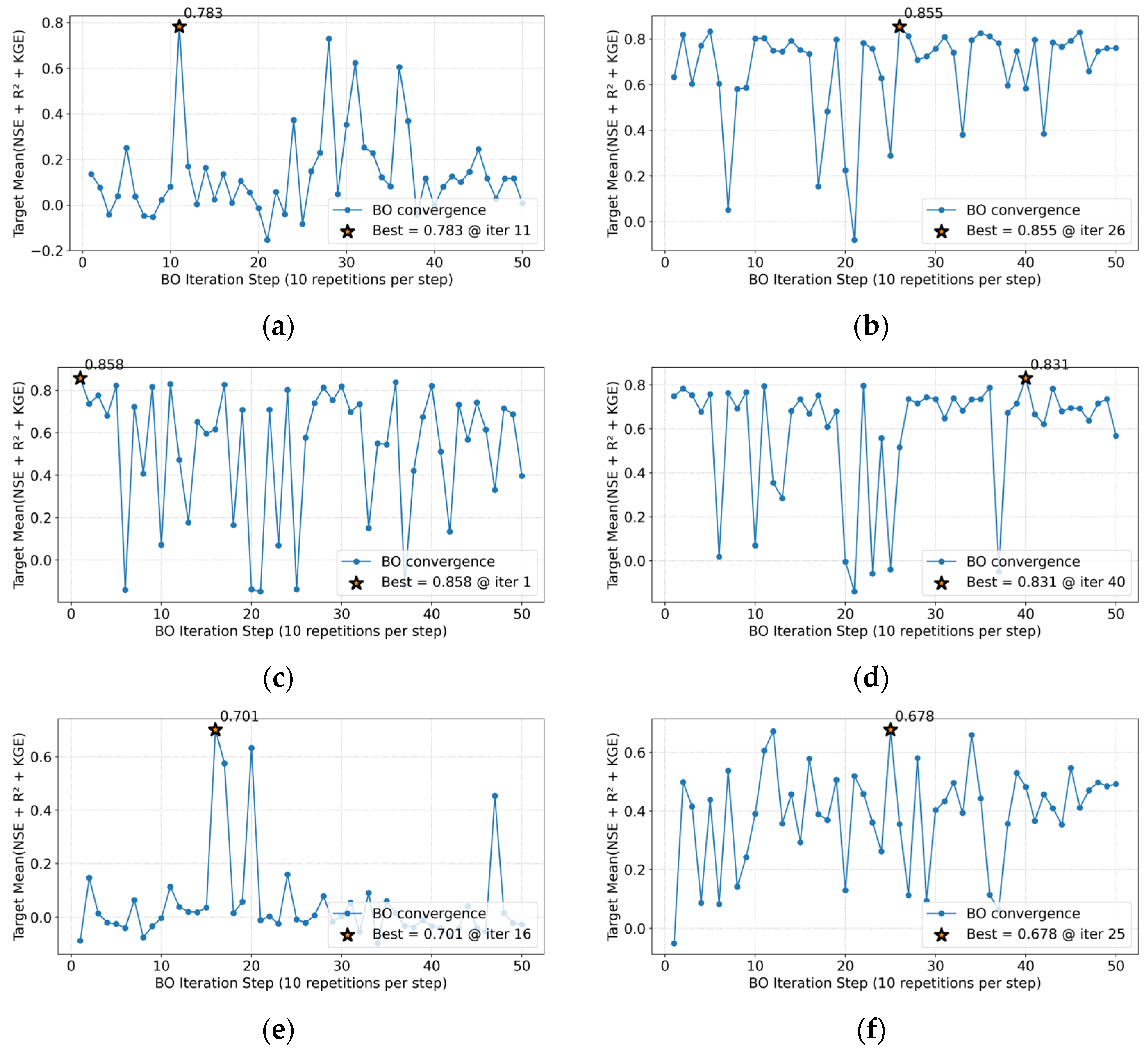
References
- Ford, D.; Williams, P.W. Karst Hydrogeology and Geomorphology; John Wiley & Sons: Chichester, UK; Hoboken, NJ, USA, 2007; ISBN 978-0-470-84996-5. [Google Scholar]
- Kurtulus, B.; Razack, M. Modeling Daily Discharge Responses of a Large Karstic Aquifer Using Soft Computing Methods: Artificial Neural Network and Neuro-Fuzzy. J. Hydrol. 2010, 381, 101–111. [Google Scholar] [CrossRef]
- Bakalowicz, M. Karst and Karst Groundwater Resources in the Mediterranean. Environ. Earth Sci. 2015, 74, 5–14. [Google Scholar] [CrossRef]
- Jourde, H.; Wang, X. Advances, Challenges and Perspective in Modelling the Functioning of Karst Systems: A Review. Environ. Earth Sci. 2023, 82, 396. [Google Scholar] [CrossRef]
- Ghasemizadeh, R.; Hellweger, F.; Butscher, C.; Padilla, I.; Vesper, D.; Field, M.; Alshawabkeh, A. Review: Groundwater Flow and Transport Modeling of Karst Aquifers, with Particular Reference to the North Coast Limestone Aquifer System of Puerto Rico. Hydrogeol. J. 2012, 20, 1441–1461. [Google Scholar] [CrossRef] [PubMed]
- Rehrl Christoph; Birk Steffen Hydrogeological Characterisation and Modelling of Spring Catchments in a Changing Environment. Austrian J. Earth Sci. 2010, 103, 106–117.
- Bakalowicz, M. Karst Groundwater: A Challenge for New Resources. Hydrogeol. J. 2005, 13, 148–160. [Google Scholar] [CrossRef]
- Zhou, R.; Zhang, Y. Linear and Nonlinear Ensemble Deep Learning Models for Karst Spring Discharge Forecasting. J. Hydrol. 2023, 627, 130394. [Google Scholar] [CrossRef]
- Jeannin, P.-Y.; Artigue, G.; Butscher, C.; Chang, Y.; Charlier, J.-B.; Duran, L.; Gill, L.; Hartmann, A.; Johannet, A.; Jourde, H.; et al. Karst Modelling Challenge 1: Results of Hydrological Modelling. J. Hydrol. 2021, 600, 126508. [Google Scholar] [CrossRef]
- Johannet, A.; Taver, V.; Kong-A-Siou, L.; Borrell, V.; Pistre, S.; Mangin, A.; Vayssade, B.; Vinches, M.; Bertin, D. Les réseaux de neurones artificiels pour la modélisation hydrodynamique des aquifères karstiques: Présentation générale et illustrations. Karstologia 2012, 60, 45–59. [Google Scholar] [CrossRef]
- Kovács, A. Geometry and Hydraulic Parameters of Karst Aquifers: A Hydrodynamic Modeling Approach. Ph.D. Thesis, Université de Neuchâtel, Neuchâtel, Switzerland, 2003. [Google Scholar]
- Sezen, C.; Bezak, N.; Bai, Y.; Šraj, M. Hydrological Modelling of Karst Catchment Using Lumped Conceptual and Data Mining Models. J. Hydrol. 2019, 576, 98–110. [Google Scholar] [CrossRef]
- Methods in Karst Hydrogeology; Goldscheider, N., Drew, D., Eds.; CRC Press: Boca Raton, FL, USA, 2014; ISBN 978-0-429-15341-9. [Google Scholar] [CrossRef]
- Mazzilli, N.; Guinot, V.; Jourde, H.; Lecoq, N.; Labat, D.; Arfib, B.; Baudement, C.; Danquigny, C.; Dal Soglio, L.; Bertin, D. KarstMod: A Modelling Platform for Rainfall—Discharge Analysis and Modelling Dedicated to Karst Systems. Environ. Model. Softw. 2019, 122, 103927. [Google Scholar] [CrossRef]
- Kovács, A.; Sauter, M. Modelling Karst Hydrodynamics. In Methods in Krast Hydrogeology; CRC Press: Boca Raton, FL, USA, 2007; Chapter 10; pp. 201–222. [Google Scholar]
- Lee, E.S.; Krothe, N.C. A Four-Component Mixing Model for Water in a Karst Terrain in South-Central Indiana, USA. Using Solute Concentration and Stable Isotopes as Tracers. Chem. Geol. 2001, 179, 129–143. [Google Scholar] [CrossRef]
- Döerfliger, N.; Jeannin, P.-Y.; Zwahlen, F. Water Vulnerability Assessment in Karst Environments: A New Method of Defining Protection Areas Using a Multi-Attribute Approach and GIS Tools (EPIK Method). Environ. Geol. 1999, 39, 165–176. [Google Scholar] [CrossRef]
- Jeannin, P.-Y.; Sauter, M. Analysis of Karst Hydrodynamic Behavior Using Global Approaches: A Review. Bull. Hydrogéol. 1998, 16, 31–48. [Google Scholar]
- Salerno, F.; Tartari, G. A Coupled Approach of Surface Hydrological Modelling and Wavelet Analysis for Understanding the Baseflow Components of River Discharge in Karst Environments. J. Hydrol. 2009, 376, 295–306. [Google Scholar] [CrossRef]
- Fleury, P.; Ladouche, B.; Conroux, Y.; Jourde, H.; Dörfliger, N. Modelling the Hydrologic Functions of a Karst Aquifer under Active Water Management—The Lez Spring. J. Hydrol. 2009, 365, 235–243. [Google Scholar] [CrossRef]
- De Vos, N.J.; Rientjes, T.H.M. Multi-Objective Performance Comparison of an Artificial Neural Network and a Conceptual Rainfall—Runoff Model. Hydrol. Sci. J. 2007, 52, 397–413. [Google Scholar] [CrossRef]
- Denić-Jukić, V.; Jukić, D. Composite Transfer Functions for Karst Aquifers. J. Hydrol. 2003, 274, 80–94. [Google Scholar] [CrossRef]
- Hartmann, A.; Gleeson, T.; Rosolem, R.; Pianosi, F.; Wada, Y.; Wagener, T. A Simulation Model to Assess Groundwater Recharge over Europe’s Karst Regions. Geosci. Model Dev. Discuss. 2014, 7, 7887–7935. [Google Scholar] [CrossRef]
- Wunsch, A.; Liesch, T.; Cinkus, G.; Ravbar, N.; Chen, Z.; Mazzilli, N.; Jourde, H.; Goldscheider, N. Karst Spring Discharge Modeling Based on Deep Learning Using Spatially Distributed Input Data. Hydrol. Earth Syst. Sci. 2022, 26, 2405–2430. [Google Scholar] [CrossRef]
- Hartmann, A.; Gleeson, T.; Rosolem, R.; Pianosi, F.; Wada, Y.; Wagener, T. A Large-Scale Simulation Model to Assess Karstic Groundwater Recharge over Europe and the Mediterranean. Geosci. Model Dev. 2015, 8, 1729–1746. [Google Scholar] [CrossRef]
- Bertola, M.; Mazzoglio, P.; HELPING REHYDRATE working group. REHYDRATE—An International HELPING Working Group to REtrieve Historical HYDRologic dATa and Estimates. Available online: https://www.researchgate.net/publication/379980552_REHYDRATE_-_an_international_HELPING_working_group_to_REtrieve_historical_HYDRologic_dATa_and_Estimates (accessed on 22 September 2025). [CrossRef]
- Cinkus, G.; Mazzilli, N.; Jourde, H. Identification of Relevant Indicators for the Assessment of Karst Systems Hydrological Functioning: Proposal of a New Classification. J. Hydrol. 2021, 603, 127006. [Google Scholar] [CrossRef]
- Chen, X.; Zhang, Z.; Soulsby, C.; Cheng, Q.; Binley, A.; Jiang, R.; Tao, M. Characterizing the Heterogeneity of Karst Critical Zone and Its Hydrological Function: An Integrated Approach. Hydrol. Process. 2018, 32, 2932–2946. [Google Scholar] [CrossRef]
- An, L.; Hao, Y.; Yeh, T.-C.J.; Liu, Y.; Liu, W.; Zhang, B. Simulation of Karst Spring Discharge Using a Combination of Time–Frequency Analysis Methods and Long Short-Term Memory Neural Networks. J. Hydrol. 2020, 589, 125320. [Google Scholar] [CrossRef]
- Bergen, K.J.; Johnson, P.A.; De Hoop, M.V.; Beroza, G.C. Machine Learning for Data-Driven Discovery in Solid Earth Geoscience. Science 2019, 363, eaau0323. [Google Scholar] [CrossRef] [PubMed]
- Gholami, V.; Khaleghi, M.R. A Comparative Study of the Performance of Artificial Neural Network and Multivariate Regression in Simulating Springs Discharge in the Caspian Southern Watersheds, Iran. Appl. Water Sci. 2019, 9, 9. [Google Scholar] [CrossRef]
- Trichakis, I.C.; Nikolos, I.K.; Karatzas, G.P. Artificial Neural Network (ANN) Based Modeling for Karstic Groundwater Level Simulation. Water Resour. Manag. 2011, 25, 1143–1152. [Google Scholar] [CrossRef]
- Paleologos, E.K.; Skitzi, I.; Katsifarakis, K.; Darivianakis, N. Neural Network Simulation of Spring Flow in Karst Environments. Stoch. Environ. Res. Risk Assess. 2013, 27, 1829–1837. [Google Scholar] [CrossRef]
- Kong-A-Siou, L.; Johannet, A.; Borrell Estupina, V.; Pistre, S. Neural Networks for Karst Groundwater Management: Case of the Lez Spring (Southern France). Environ. Earth Sci 2015, 74, 7617–7632. [Google Scholar] [CrossRef]
- Opoku, P.A.; Shu, L.; Ansah-Narh, T.; Banahene, P.; Yao, K.B.M.O.; Kwaw, A.K.; Niu, S. Prediction of Karst Spring Discharge Using LSTM with Bayesian Optimisation Hyperparameter Tuning: A Laboratory Physical Model Approach. Model. Earth Syst. Environ. 2024, 10, 1457–1482. [Google Scholar] [CrossRef]
- Kharroubi, O.; Achour, R.; Ammami, M.-T.; Benamar, A. Hourly Flow Forecasting in a Karst Watershed: The Iton River (France). Water 2025, 17, 977. [Google Scholar] [CrossRef]
- De Filippi, F.M.; Ginesi, M.; Sappa, G. A Fully Connected Neural Network (FCNN) Model to Simulate Karst Spring Flowrates in the Umbria Region (Central Italy). Water 2024, 16, 2580. [Google Scholar] [CrossRef]
- Fasihi, R.; Taheri Tizro, A.; Marofi, S. Simulating the Discharge of Nahavand Karstic Springs Based on Neural Intelligent Models. J. Hydroinform. 2025, 27, 442–455. [Google Scholar] [CrossRef]
- Cinkus, G.; Wunsch, A.; Mazzilli, N.; Liesch, T.; Chen, Z.; Ravbar, N.; Doummar, J.; Fernández-Ortega, J.; Barberá, J.A.; Andreo, B.; et al. Comparison of Artificial Neural Networks and Reservoir Models for Simulating Karst Spring Discharge on Five Test Sites in the Alpine and Mediterranean Regions. Hydrol. Earth Syst. Sci. 2023, 27, 1961–1985. [Google Scholar] [CrossRef]
- Mo, C.; Jiang, C.; Lei, X.; Lai, S.; Deng, Y.; Cen, W.; Sun, G.; Xing, Z. Combining Standard Artificial Intelligence Models, Pre-Processing Techniques, and Post-Processing Methods to Improve the Accuracy of Monthly Runoff Predictions in Karst-Area Watersheds. Appl. Sci. 2022, 13, 88. [Google Scholar] [CrossRef]
- Djebbi, M.; Besbes, M.; Sagna, J.; Rekaya, M. The Karstic Springs from Zaghouan. Looking for a Rainfall-Discharge Operator; Univ. Franche-Comté: Besançon, France, 2001; pp. 125–128. [Google Scholar]
- Nazoumou, Y. Study of the Deep Aquifers of the South-Eastern Governorate of Zaghouan (Tunisia); Water Resources Directorate/SCET: Tunis, Tunisia, 2002; p. 100. [Google Scholar]
- Zhou, G.; Yan, H.; Chen, K.; Zhang, R. Spatial Analysis for Susceptibility of Second-Time Karst Sinkholes: A Case Study of Jili Village in Guangxi, China. Comput. Geosci. 2016, 89, 144–160. [Google Scholar] [CrossRef]
- Fadhillah, M.F.; Lee, S.; Lee, C.-W.; Park, Y.-C. Application of Support Vector Regression and Metaheuristic Optimization Algorithms for Groundwater Potential Mapping in Gangneung-Si, South Korea. Remote Sens. 2021, 13, 1196. [Google Scholar] [CrossRef]
- Reimann, T.; Hill, M.E. MODFLOW-CFP: A New Conduit Flow Process for MODFLOW–2005. Groundwater 2009, 47, 321–325. [Google Scholar] [CrossRef]
- Birk, S.; Liedl, R.; Sauter, M. Karst Spring Responses Examined by Process-Based Modeling. Groundwater 2006, 44, 832–836. [Google Scholar] [CrossRef] [PubMed]
- Instituto Geológico y Minero de España (IGME); Pardo-Igúzquiza, E.; Dowd, P.; The University of Adelaide; Durán, J.; Robledo-Ardila, P.; Unidad del IGME en las Islas Baleares. A Review of Fractals in Karst. IJS 2019, 48, 11–20. [Google Scholar] [CrossRef]
- Mangin, A. Contribution à L’étude Hydrodynamique des Aquifères Karstiques. Ph.D. Thesis, Sciences de la Terre, Université de Dijon, Dijon, France, 1975. [Google Scholar]
- Fandel, C.; Ferré, T.; Miville, F.; Renard, P.; Goldscheider, N. Improving Understanding of Groundwater Flow in an Alpine Karst System by Reconstructing Its Geologic History Using Conduit Network Model Ensembles. Hydrol. Earth Syst. Sci. 2023, 27, 4205–4215. [Google Scholar] [CrossRef]
- PRIMA-KARMA Project. The KARMA Project. Retrieved from Karst Aquifer Resources Availability and Quality in the Mediterranean Area. 2023. Available online: http://karma-project.org/ (accessed on 1 January 2019).
- Faydi, T. La Modélisation Hydrodynamique des Aquifères Karstiques de Djebel Zaghouan par KarstMod. Master’s Thesis, University Tunis El Manar, National Engineering School of Tunis, Tunis, Tunisia, 2021. Available online: https://www.biruni.tn/catalogue-local.php?ei=29 (accessed on 22 September 2025).
- Clamagirand, E.; Rais, S.; Chahed, J.; Guefrej, R.; Smaoui, L. L’aqueduc de Carthage. La Houille Blanche 1990, 76, 423–432. [Google Scholar] [CrossRef]
- Gargouri-Ellouze, E.; Slama, F.; Kriaa, S.; Benhmid, A.; Taupin, J.-D.; Bouhlila, R. Comprehensive Assessment of the Jebel Zaghouan Karst Aquifer (Northeastern Tunisia): Availability, Quality, and Vulnerability, in the Context of Overexploitation and Global Change. Water 2025, 17, 407. [Google Scholar] [CrossRef]
- Franzke, C.L.E.; Barbosa, S.; Blender, R.; Fredriksen, H.; Laepple, T.; Lambert, F.; Nilsen, T.; Rypdal, K.; Rypdal, M.; Scotto, M.G.; et al. The Structure of Climate Variability Across Scales. Rev. Geophys. 2020, 58, e2019RG000657. [Google Scholar] [CrossRef]
- North, G.R.; Wang, J.; Genton, M.G. Correlation Models for Temperature Fields. J. Clim. 2011, 24, 5850–5862. [Google Scholar] [CrossRef]
- Niako, N.; Melgarejo, J.D.; Maestre, G.E.; Vatcheva, K.P. Effects of Missing Data Imputation Methods on Univariate Blood Pressure Time Series Data Analysis and Forecasting with ARIMA and LSTM. BMC Med. Res. Methodol. 2024, 24, 320. [Google Scholar] [CrossRef]
- Mangin, A. Pour une meilleure connaissance des systèmes hydrologiques à partir des analyses corrélatoire et spectrale. J. Hydrol. 1984, 67, 25–43. [Google Scholar] [CrossRef]
- Siou, L.K.a. Modélisation des Crues de Bassins Karstiques par Réseaux de Neurones. Cas du Bassin du Lez (France). Ph.D. Thesis, Université Montpellier II—Sciences et Techniques du Languedoc, Montpellier, France, 2011. Available online: https://theses.hal.science/tel-00649103v1 (accessed on 22 September 2025).
- Wunsch, A.; Liesch, T.; Broda, S. Groundwater Level Forecasting with Artificial Neural Networks: A Comparison of Long Short-Term Memory (LSTM), Convolutional Neural Networks (CNNs), and Non-Linear Autoregressive Networks with Exogenous Input (NARX). Hydrol. Earth Syst. Sci. 2021, 25, 1671–1687. [Google Scholar] [CrossRef]
- Gupta, H.V.; Kling, H.; Yilmaz, K.K.; Martinez, G.F. Decomposition of the Mean Squared Error and NSE Performance Criteria: Implications for Improving Hydrological Modelling. J. Hydrol. 2009, 377, 80–91. [Google Scholar] [CrossRef]
- Marsaud, B. Structure et Fonctionnement de la Zone Noyée des Karsts à Partir des Résultats Expérimentaux. Ph.D. Thesis, Université Paris IX, Orsay, France, 1997. [Google Scholar]
- Hartmann, A.; Liu, Y.; Olarinoye, T.; Berthelin, R.; Marx, V. Integrating Field Work and Large-Scale Modeling to Improve Assessment of Karst Water Resources. Hydrogeol. J. 2021, 29, 315–329. [Google Scholar] [CrossRef]
- Sivelle, V.; Cinkus, G.; Mazzilli, N.; Labat, D.; Arfib, B.; Massei, N.; Cousquer, Y.; Bertin, D.; Jourde, H. Improvement of the KarstMod Modelling Platform for a Better Assessment of Karst Groundwater Resources. Hydrol. Earth Syst. Sci. 2025, 29, 1259–1276. [Google Scholar] [CrossRef]
- Fleury, P.; Plagnes, V.; Bakalowicz, M. Modelling of the Functioning of Karst Aquifers with a Reservoir Model: Application to Fontaine de Vaucluse (South of France). J. Hydrol. 2007, 345, 38–49. [Google Scholar] [CrossRef]
- Tennant, H.; Neilson, B.T.; Hill, D.; Newell, D.L.; Evans, J.P.; Choi, S.; McNamara, J.P.; Ashmead, N.; Xu, T. Karst Hydrologic Memory Supplements Streamflow During Dry Periods in Snow-Dominated, Mountainous Watersheds. Hydrol. Process. 2024, 38, e70019. [Google Scholar] [CrossRef]
- Baig, F.; Sherif, M.; Faiz, M.A. Quantification of Precipitation and Evapotranspiration Uncertainty in Rainfall-Runoff Modeling. Hydrology 2022, 9, 51. [Google Scholar] [CrossRef]
- Min, X.; Yang, C.; Dong, N. Merging Satellite and Gauge Rainfalls for Flood Forecasting of Two Catchments Under Different Climate Conditions. Water 2020, 12, 802. [Google Scholar] [CrossRef]
- Xu, G.; Fan, H.; Oliver, D.M.; Dai, Y.; Li, H.; Shi, Y.; Long, H.; Xiong, K.; Zhao, Z. Decoding River Pollution Trends and Their Landscape Determinants in an Ecologically Fragile Karst Basin Using a Machine Learning Model. Environ. Res. 2022, 214, 113843. [Google Scholar] [CrossRef]
- Feng, D.; Fang, K.; Shen, C. Enhancing Streamflow Forecast and Extracting Insights Using Long-Short Term Memory Networks With Data Integration at Continental Scales. Water Resour. Res. 2020, 56, e2019WR026793. [Google Scholar] [CrossRef]
- Kratzert, F.; Klotz, D.; Herrnegger, M.; Sampson, A.K.; Hochreiter, S.; Nearing, G.S. Toward Improved Predictions in Ungauged Basins: Exploiting the Power of Machine Learning. Water Resour. Res. 2019, 55, 11344–11354. [Google Scholar] [CrossRef]
- Castany, G. Etude Géologique de l’Atlas Tunisien Oriental; Annales des mines et de la géologie. Régence de Tunis Protectorat français Direction des travaux publics; Imprimerie de l’Est: Besançon, France, 1951; Available online: https://www.onm.nat.tn/fr/index.php?p=notices&findtype=details&id=9849 (accessed on 22 September 2025).
- Bishop, C.M. Pattern Recognition and Machine Learning; Information science and statistics; Springer: New York, NY, USA, 2006; ISBN 978-0-387-31073-2. [Google Scholar]
- Goodfellow, I.; Bengio, Y.; Courville, A. Deep Learning; Adaptive Computation and Machine Learning; The MIT Press: Cambridge, MA, USA, 2016; ISBN 978-0-262-03561-3. [Google Scholar]
- Hornik, K.; Stinchcombe, M.; White, H. Multilayer Feedforward Networks Are Universal Approximators. Neural Netw. 1989, 2, 359–366. [Google Scholar] [CrossRef]
- Kisi, O.; Shiri, J.; Tombul, M. Modeling Rainfall-Runoff Process Using Soft Computing Techniques. Comput. Geosci. 2013, 51, 108–117. [Google Scholar] [CrossRef]
- Tzoraki, O.; Nikolaidis, N.P. A Generalized Framework for Modeling the Hydrologic and Biogeochemical Response of a Mediterranean Temporary River Basin. J. Hydrol. 2007, 346, 112–121. [Google Scholar] [CrossRef]
- Cheng, S.; Qiao, X.; Shi, Y.; Wang, D. Machine Learning for Predicting Discharge Fluctuation of a Karst Spring in North China. Acta Geophys. 2021, 69, 257–270. [Google Scholar] [CrossRef]
- Piotrowski, A.P.; Napiorkowski, J.J. A Comparison of Methods to Avoid Overfitting in Neural Networks Training in the Case of Catchment Runoff Modelling. J. Hydrol. 2013, 476, 97–111. [Google Scholar] [CrossRef]
- LeCun, Y.; Bengio, Y.; Hinton, G. Deep Learning. Nature 2015, 521, 436–444. [Google Scholar] [CrossRef]
- Hochreiter, S.; Schmidhuber, J. Long Short-Term Memory. Neural Comput. 1997, 9, 1735–1780. [Google Scholar] [CrossRef]
- Gers, F.A.; Schmidhuber, J.; Cummins, F. Learning to Forget: Continual Prediction with LSTM. Neural Comput. 2000, 12, 2451–2471. [Google Scholar] [CrossRef]
- Snoek, J.; Larochelle, H.; Adams, R.P. Practical Bayesian Optimization of Machine Learning Algorithms. Adv. Neural Inf. Process. Syst. 2012, 25. [Google Scholar] [CrossRef]
- Keskar, N.S.; Mudigere, D.; Nocedal, J.; Smelyanskiy, M.; Tang, P.T.P. On Large-Batch Training for Deep Learning: Generalization Gap and Sharp Minima. arXiv 2016. [Google Scholar] [CrossRef]
- Srivastava, N.; Hinton, G.; Krizhevsky, A.; Sutskever, I.; Salakhutdinov, R. Dropout: A Simple Way to Prevent Neural Networks from Overfitting. J. Mach. Learn. Res. 2014, 15, 1929–1958. [Google Scholar]
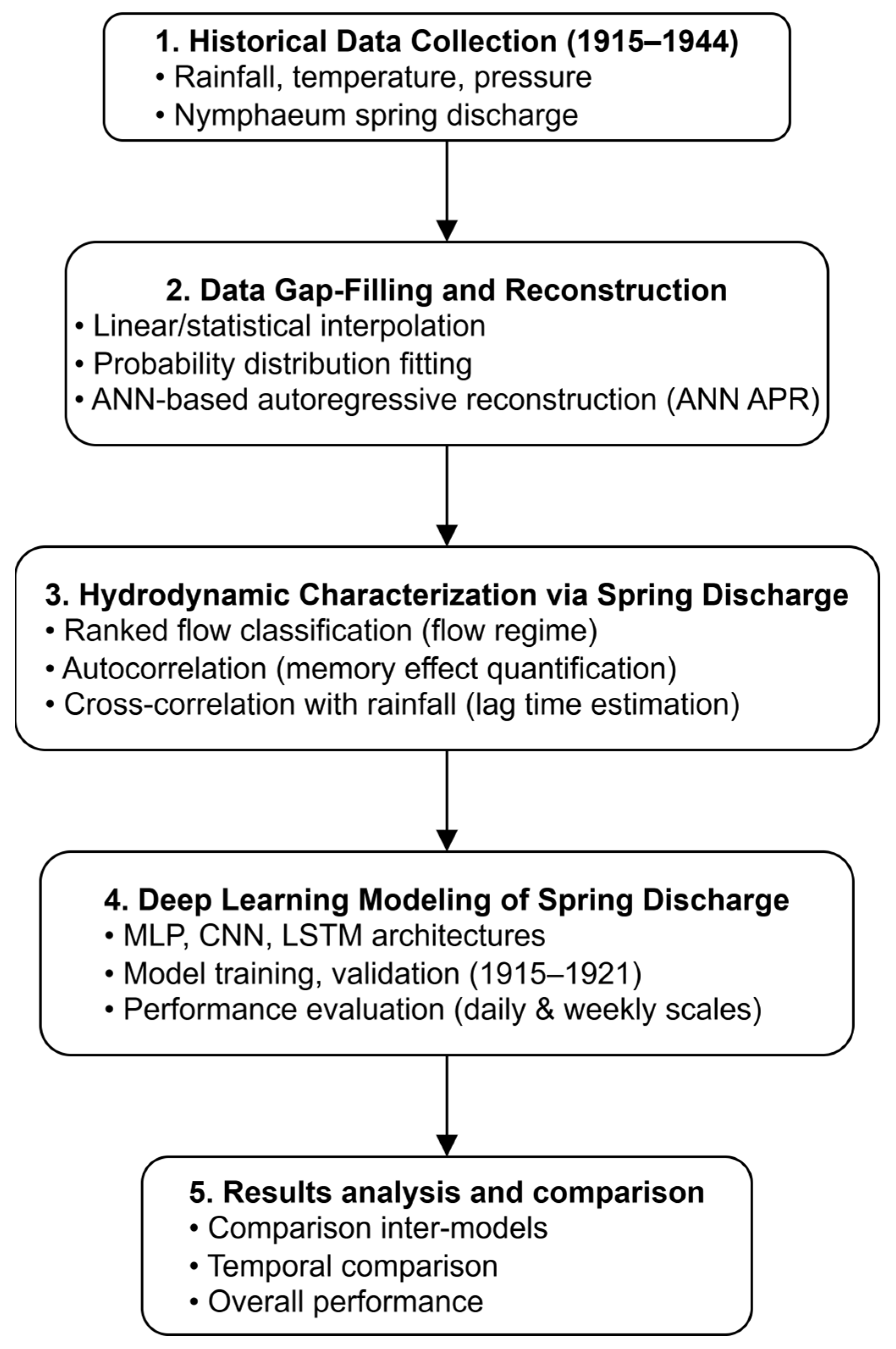
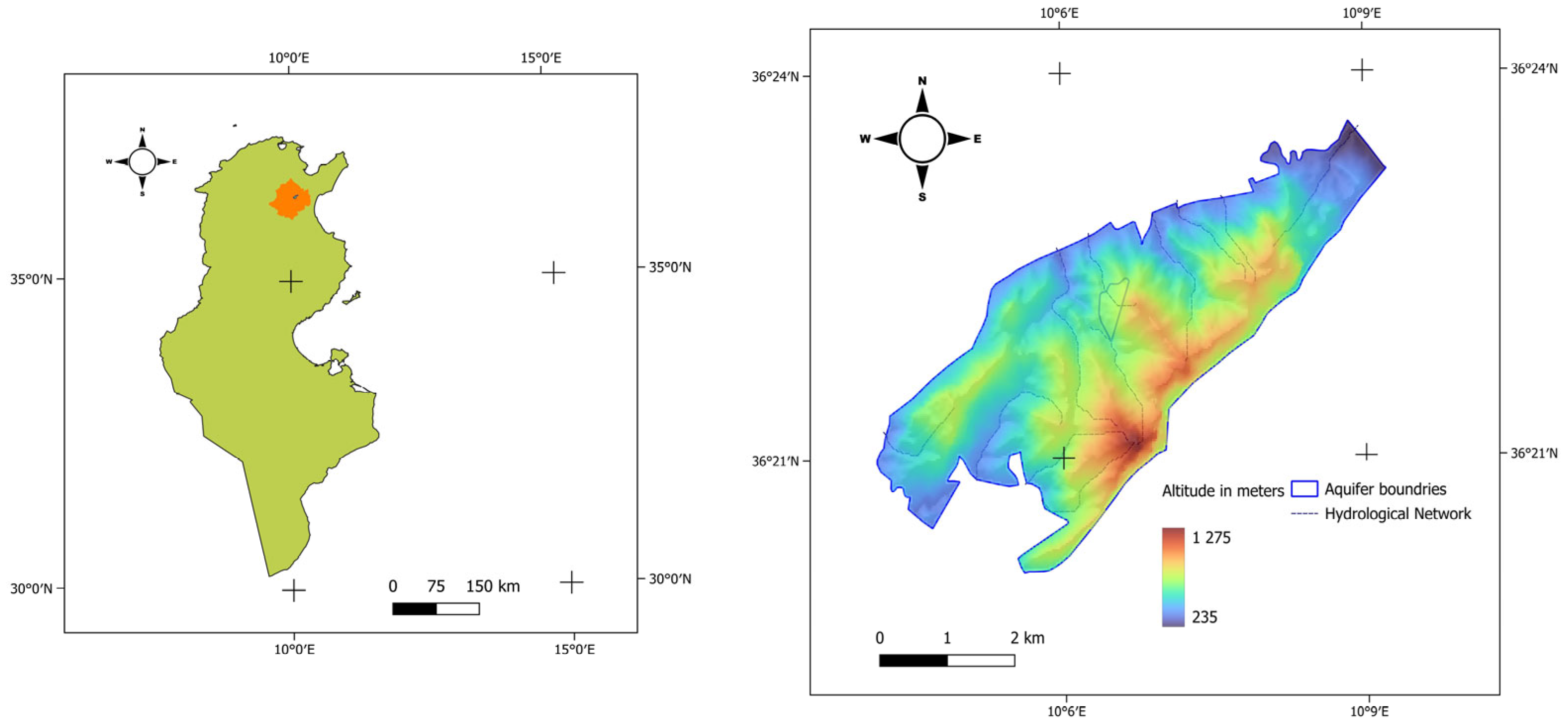
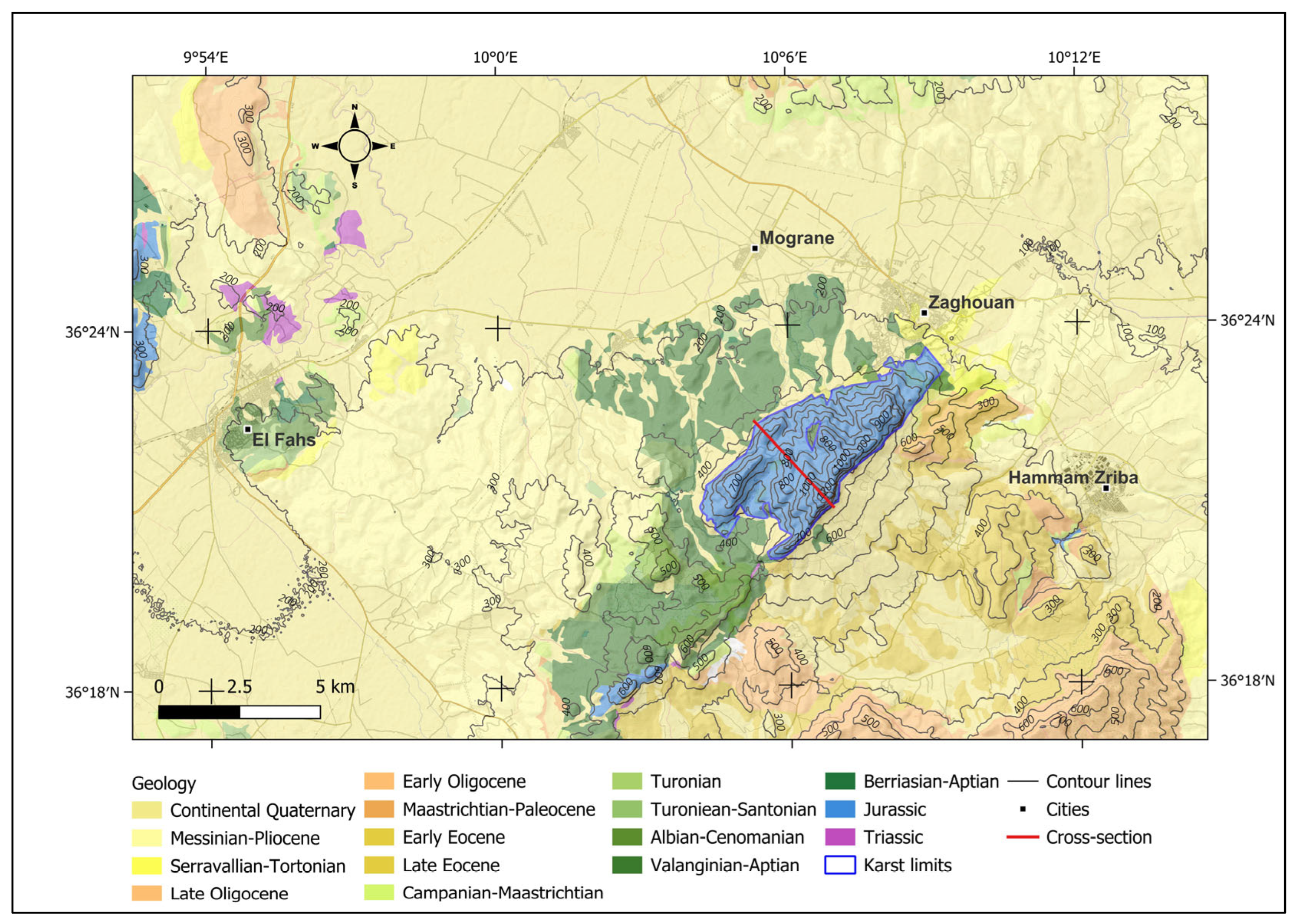
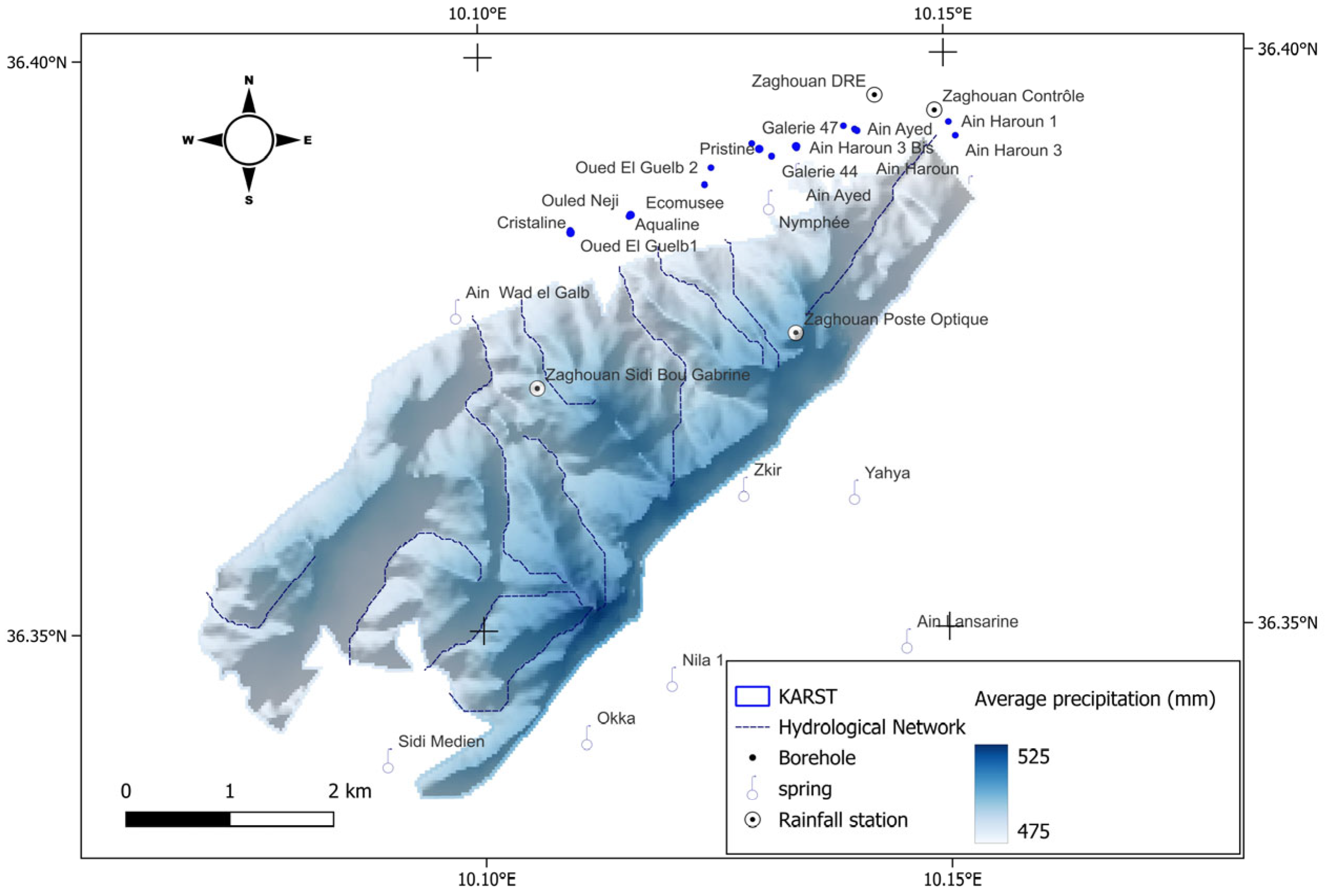
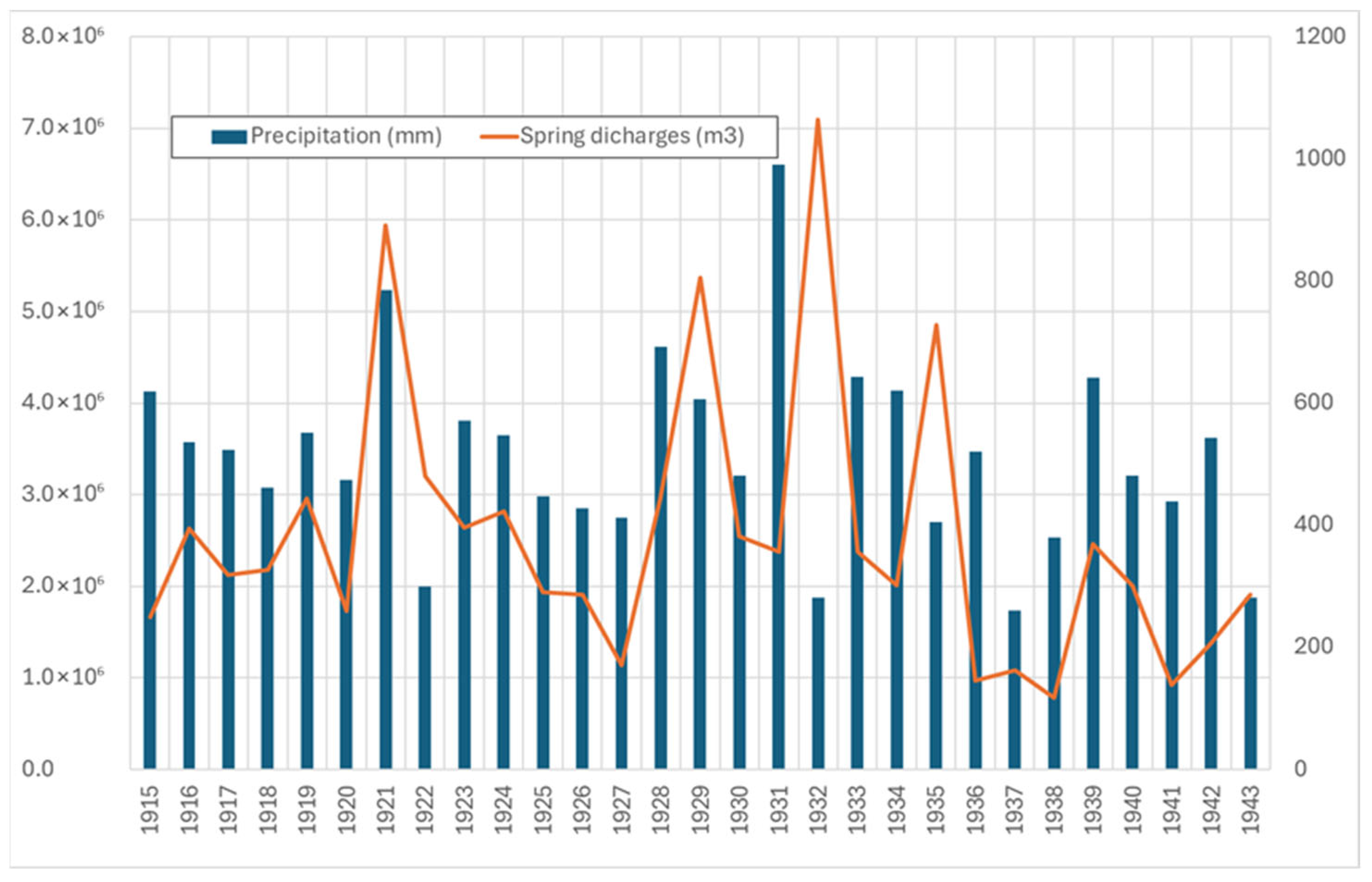
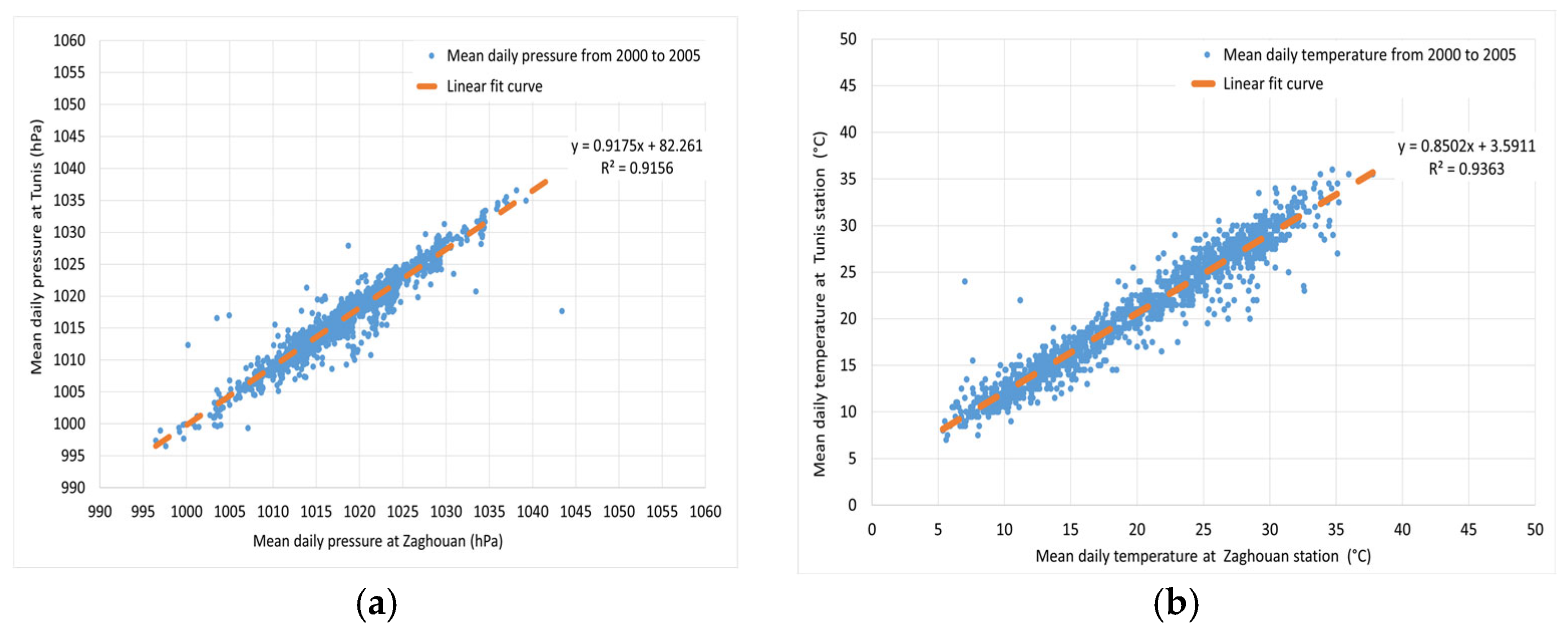
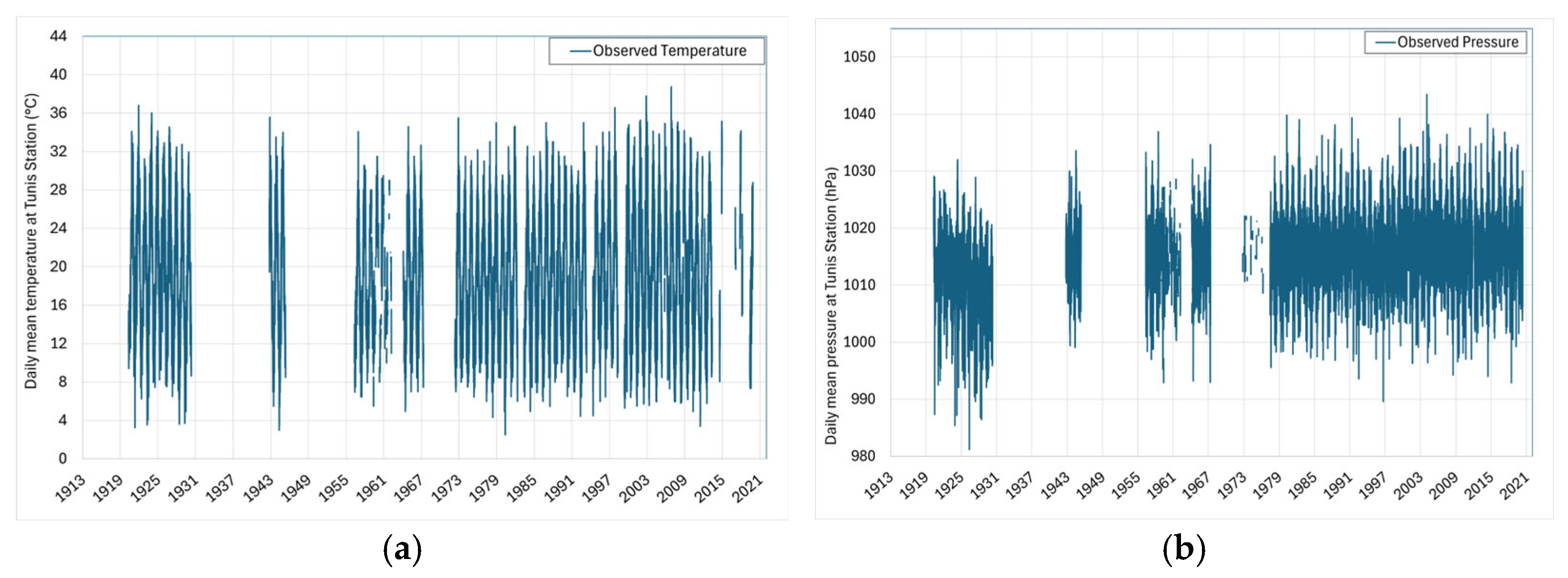
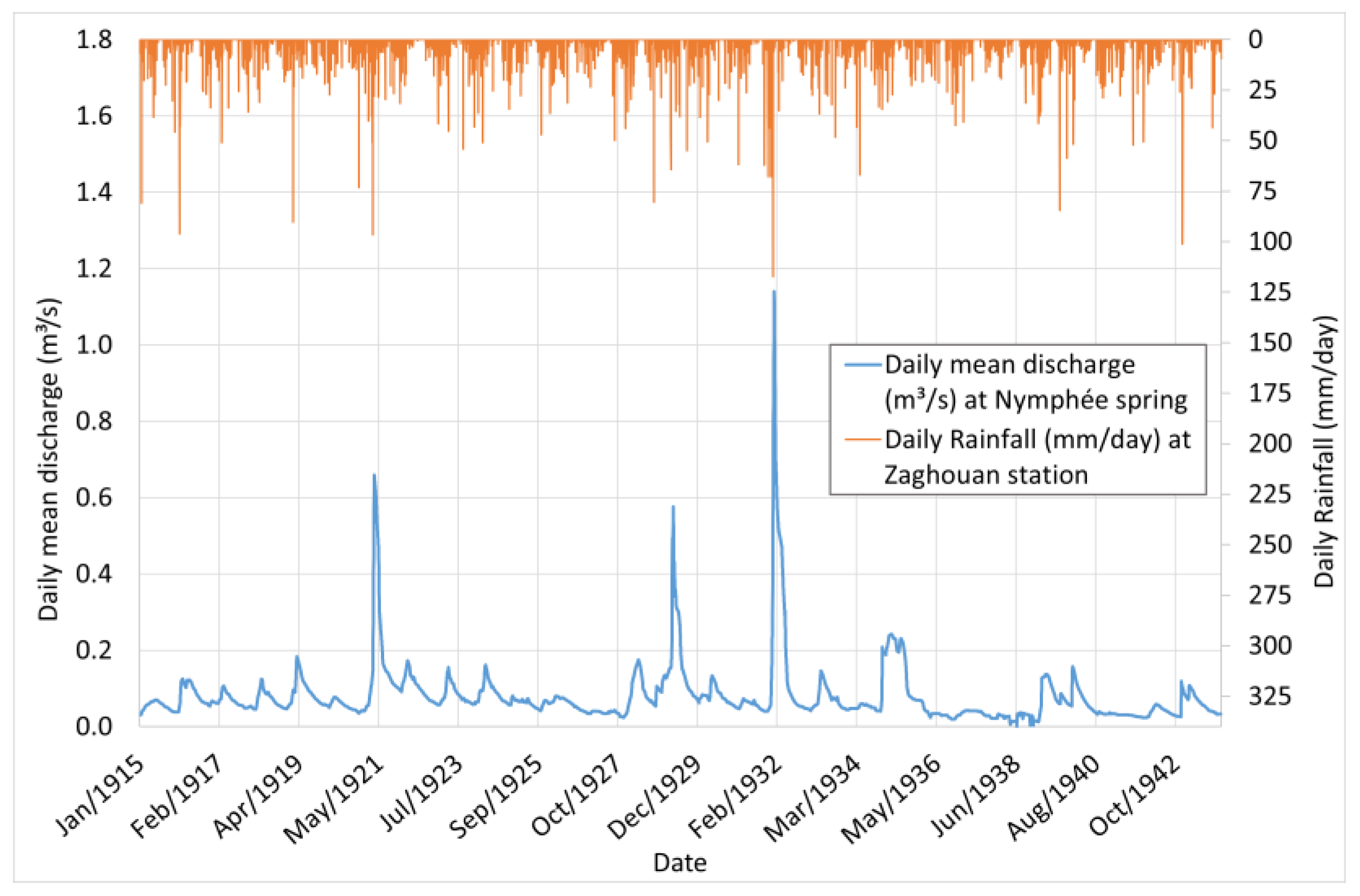
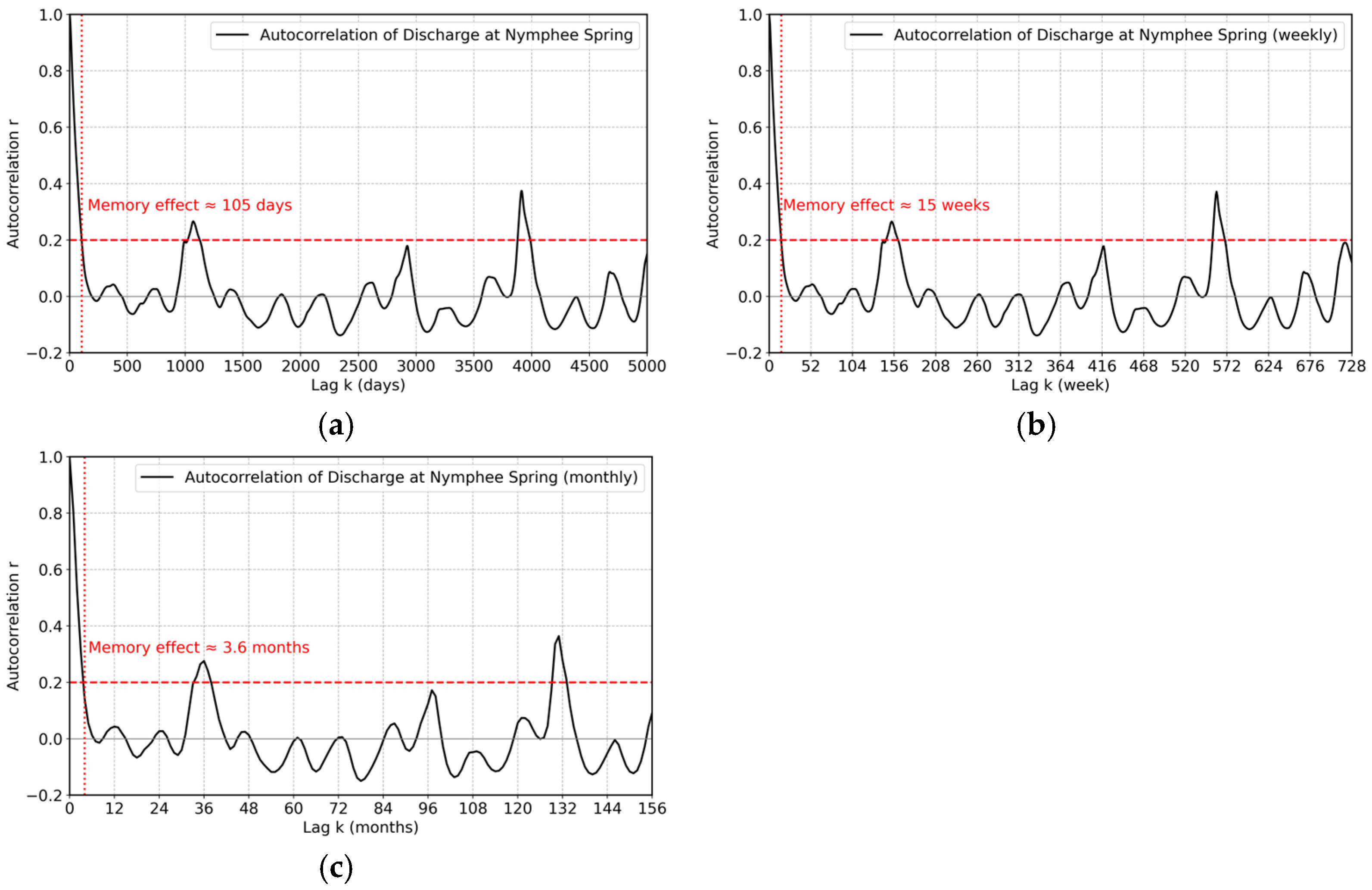
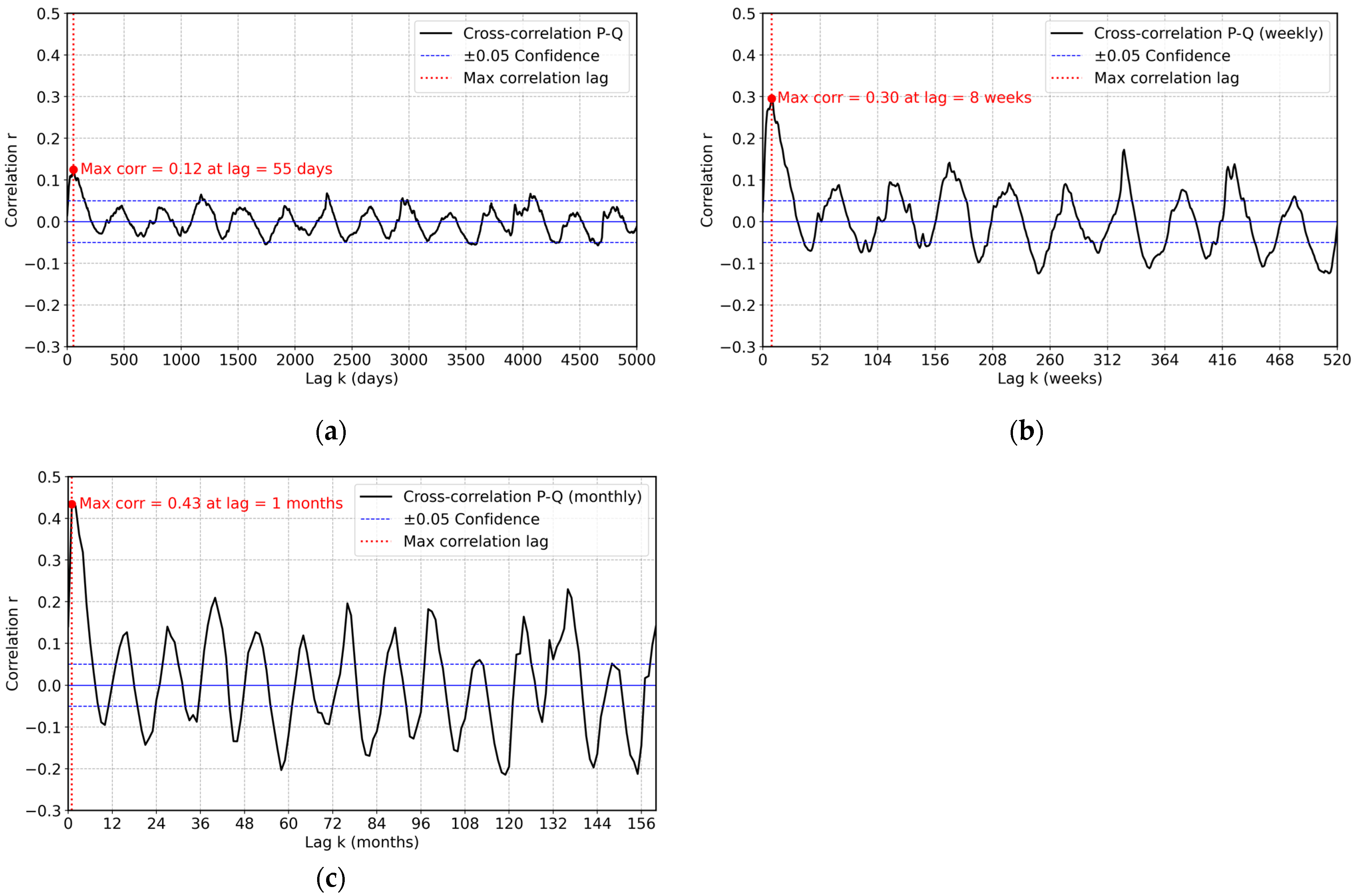
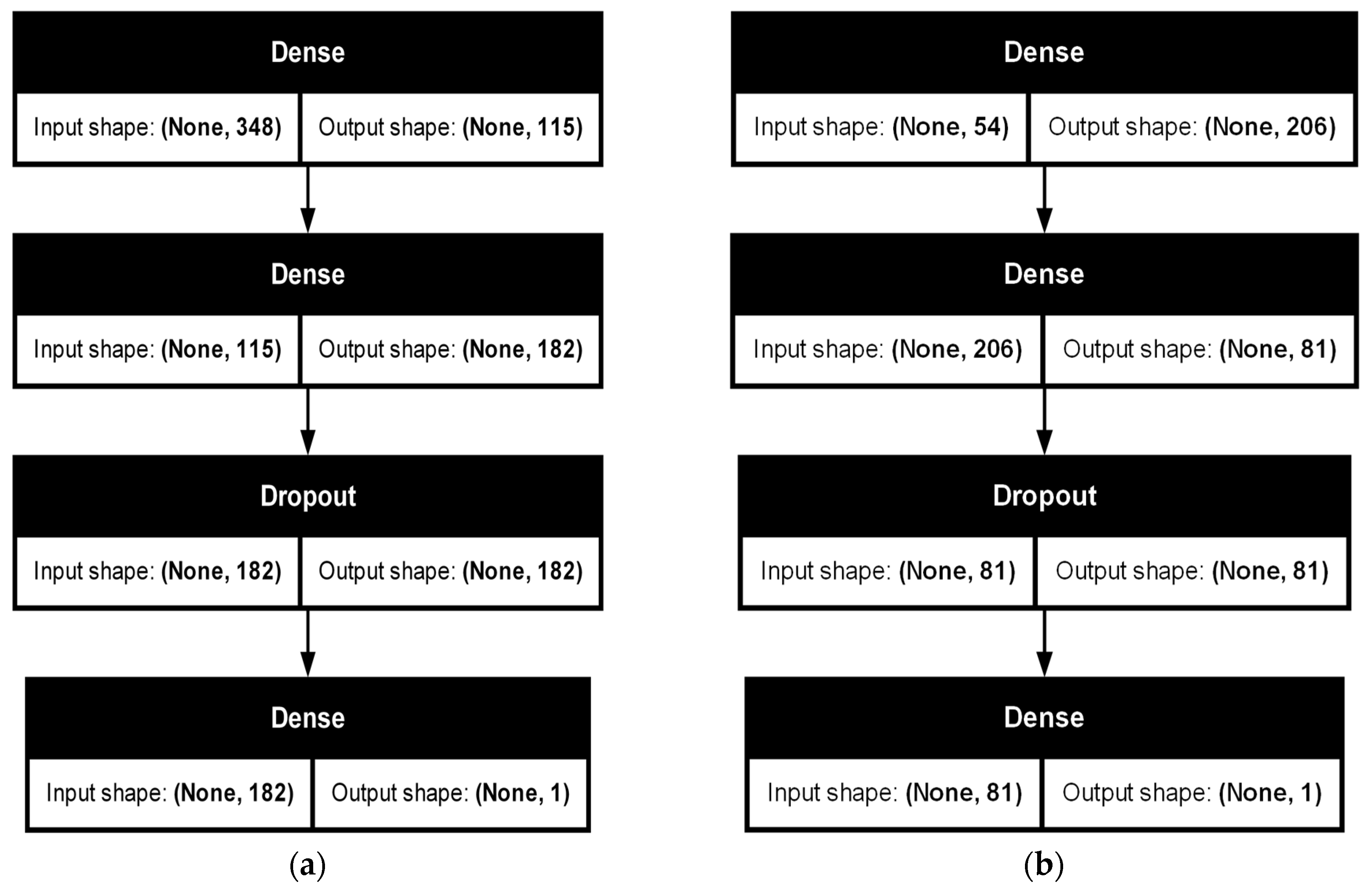
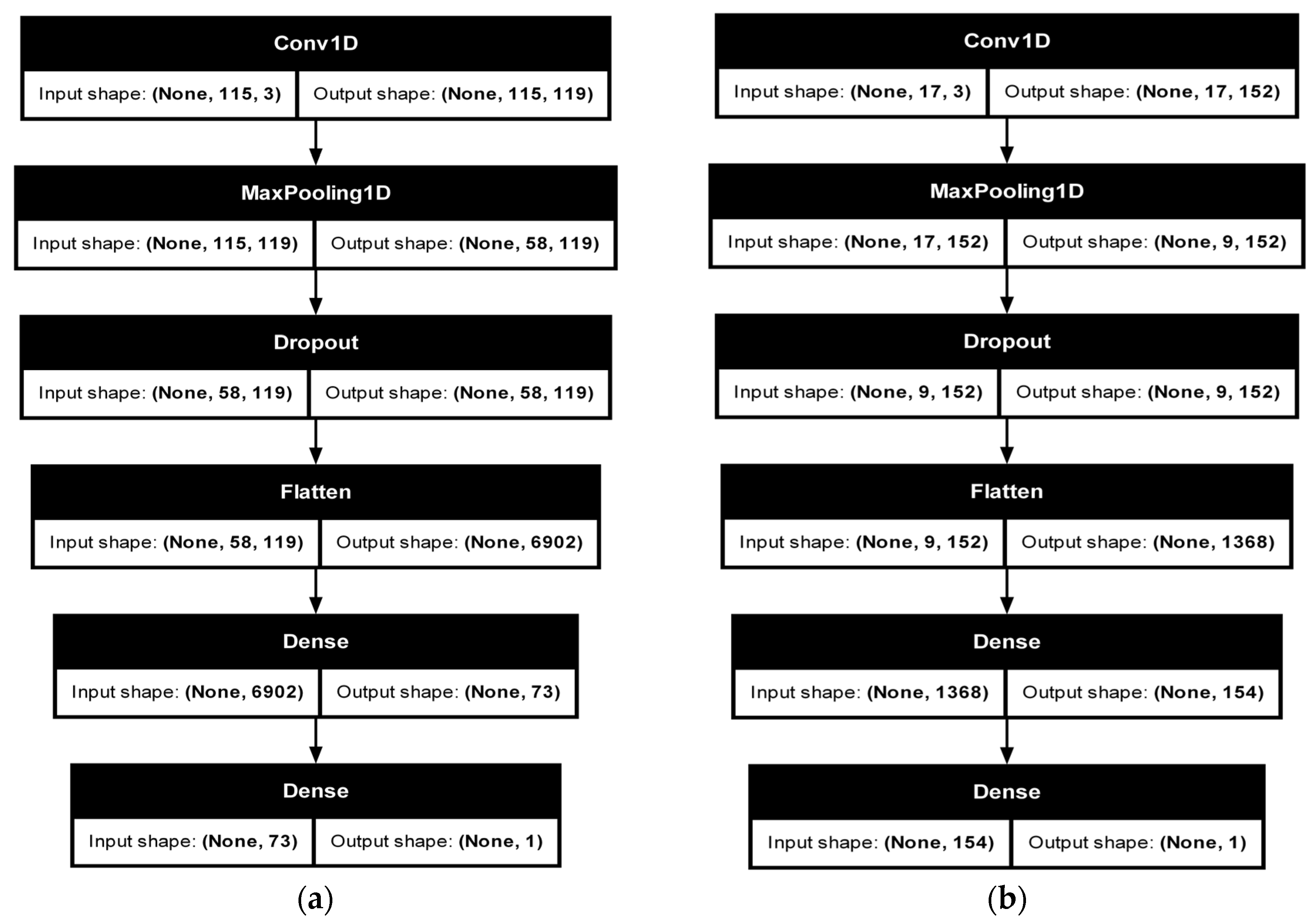
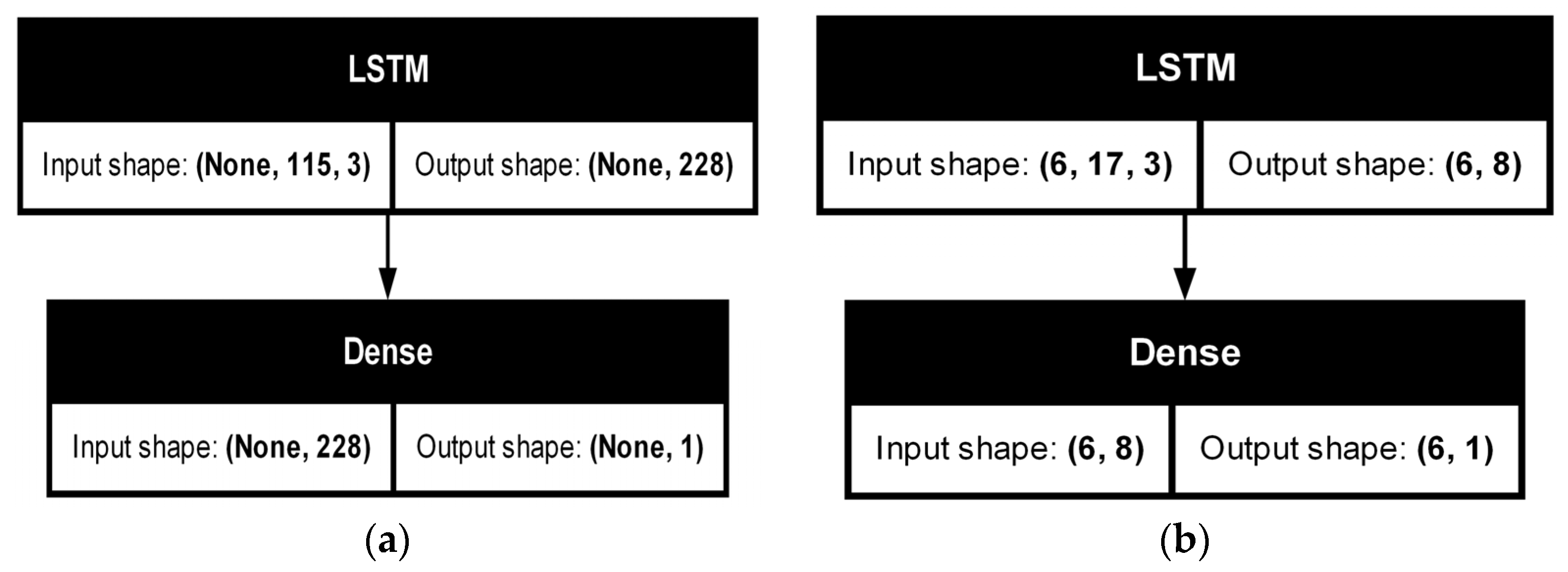

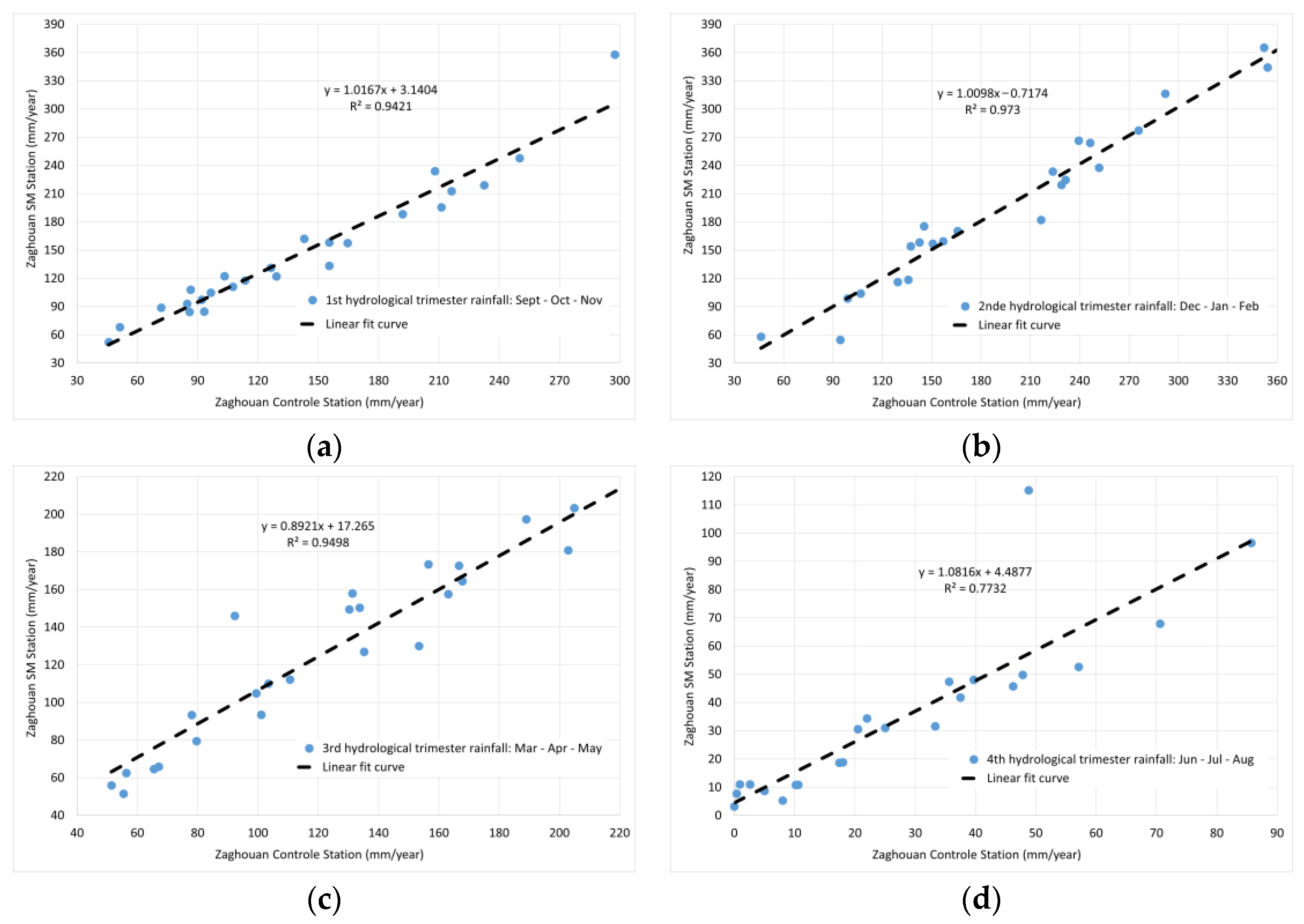
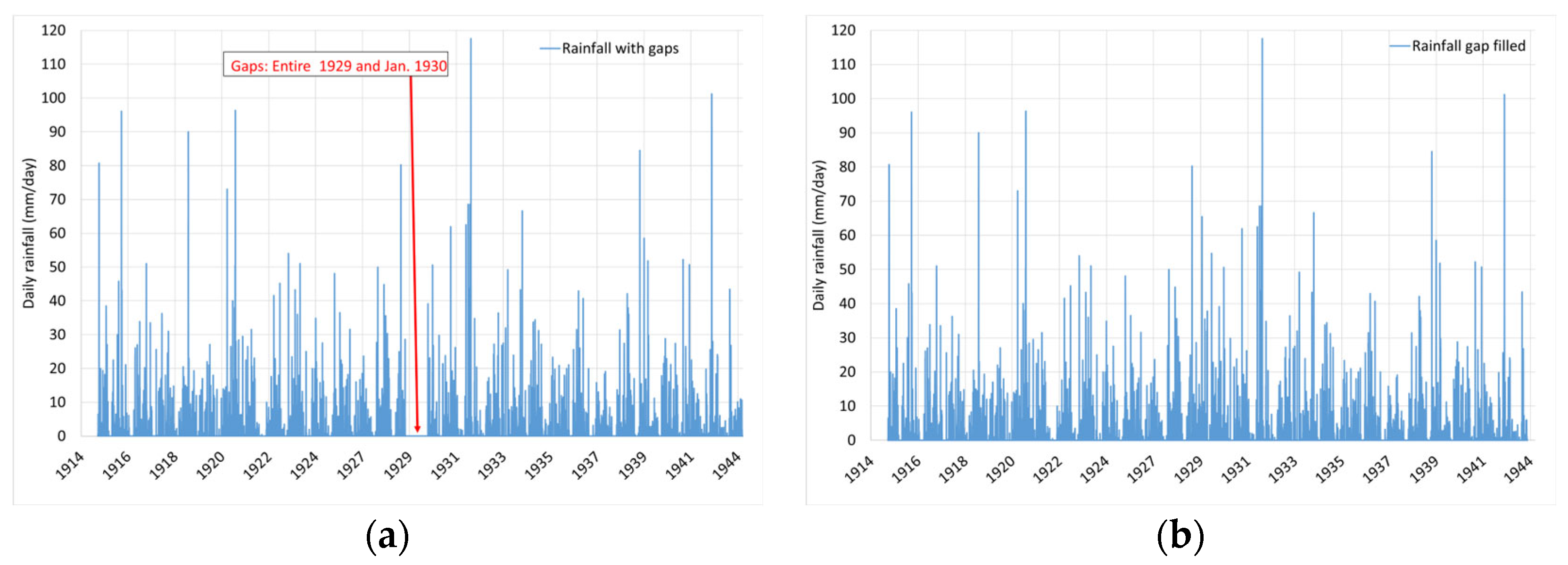
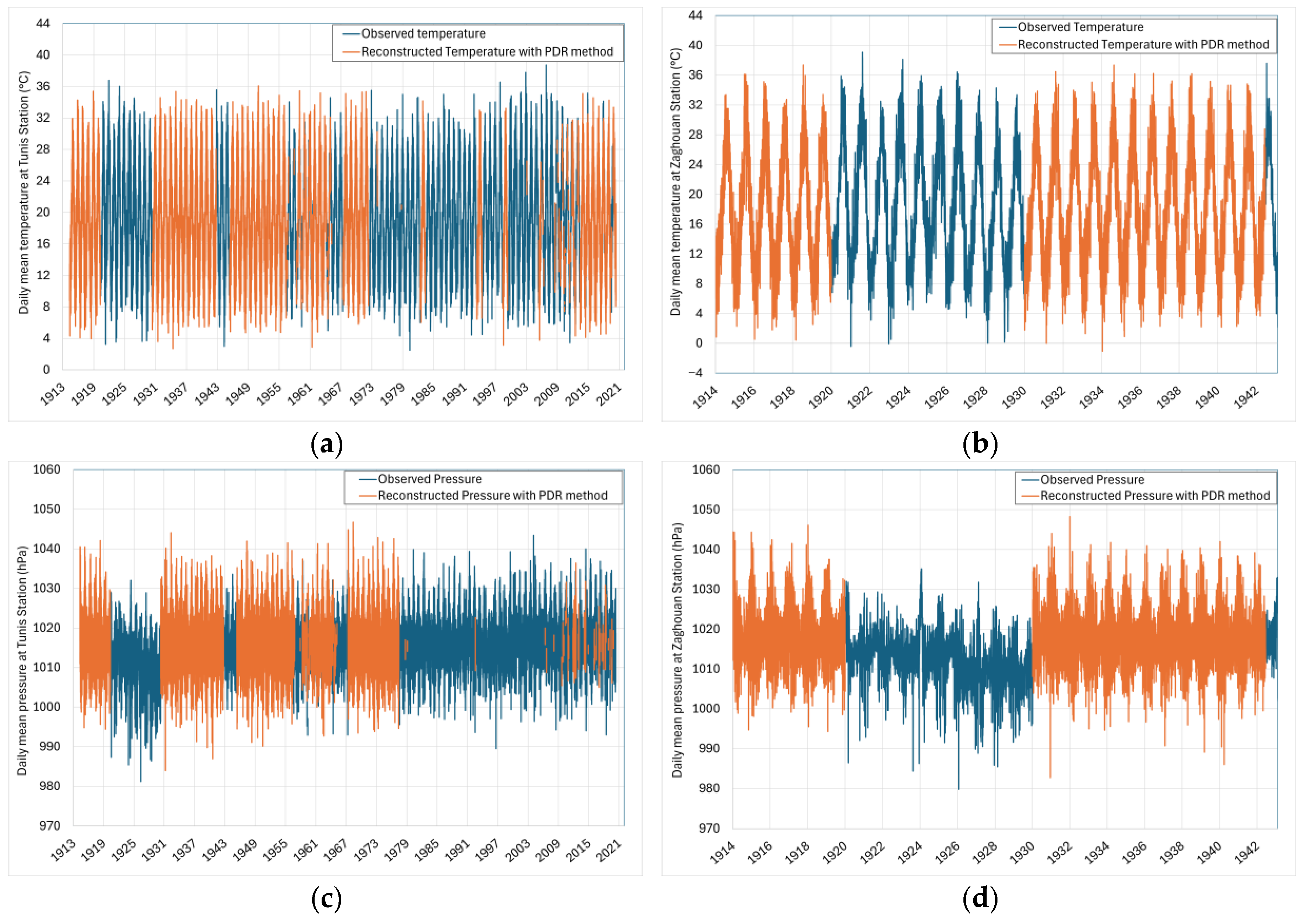
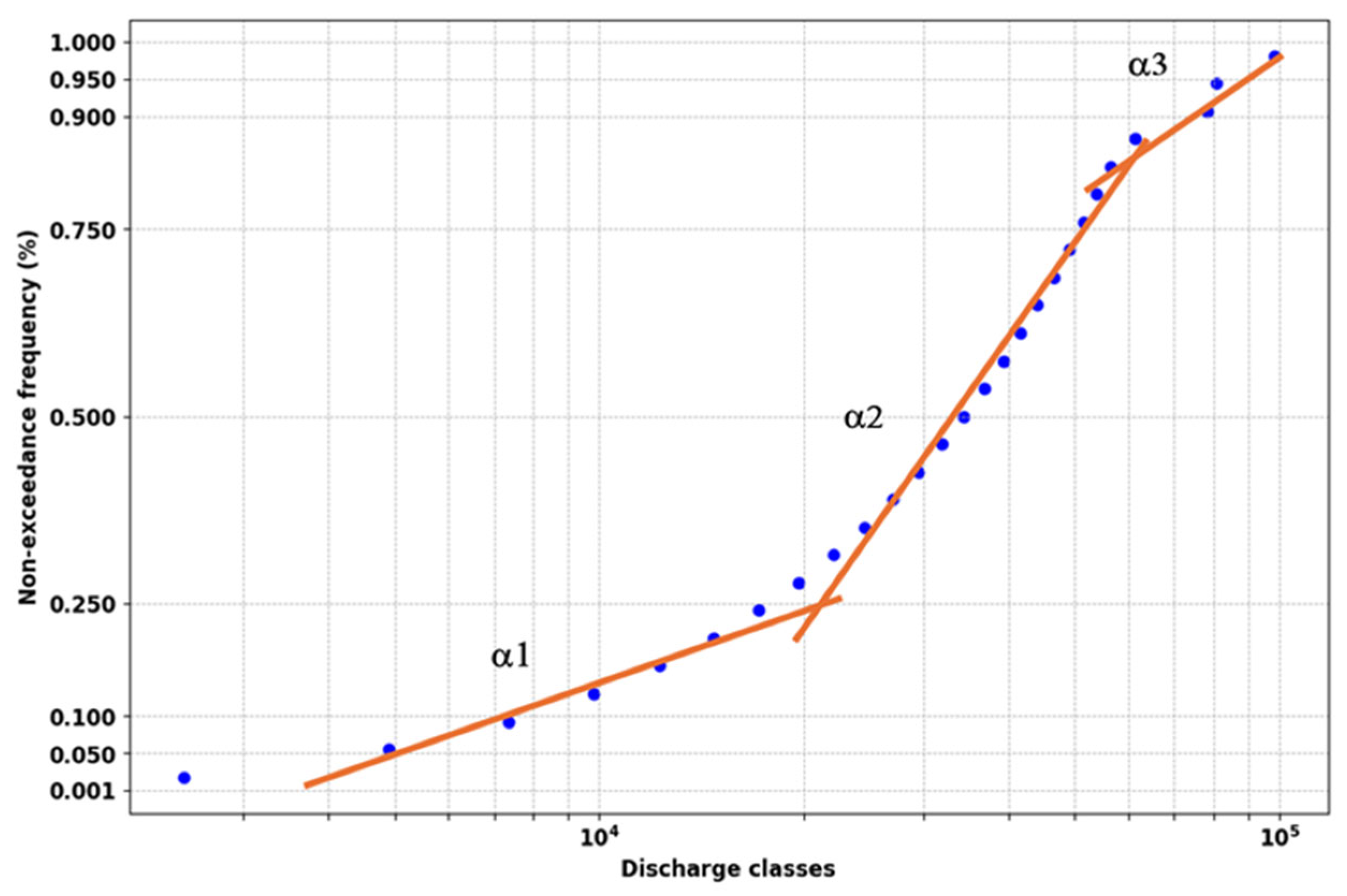
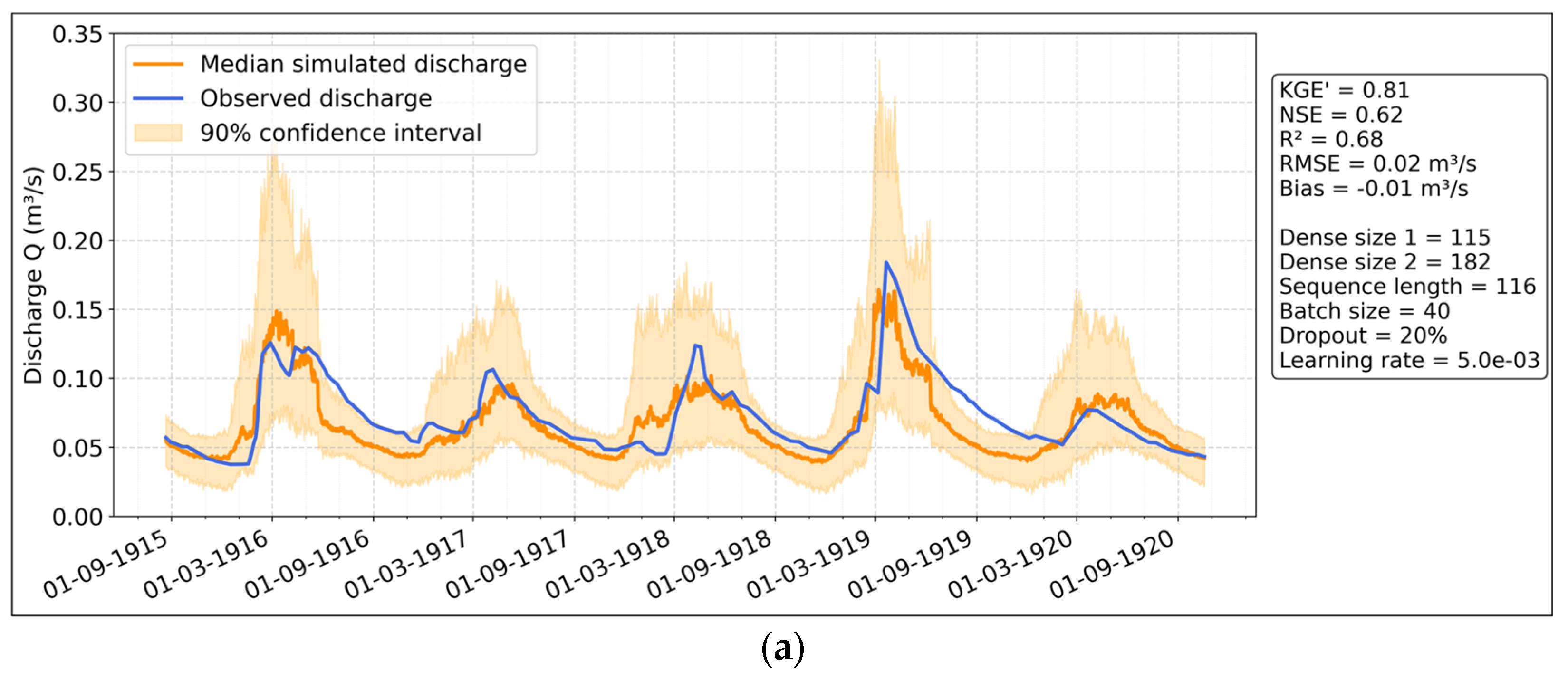
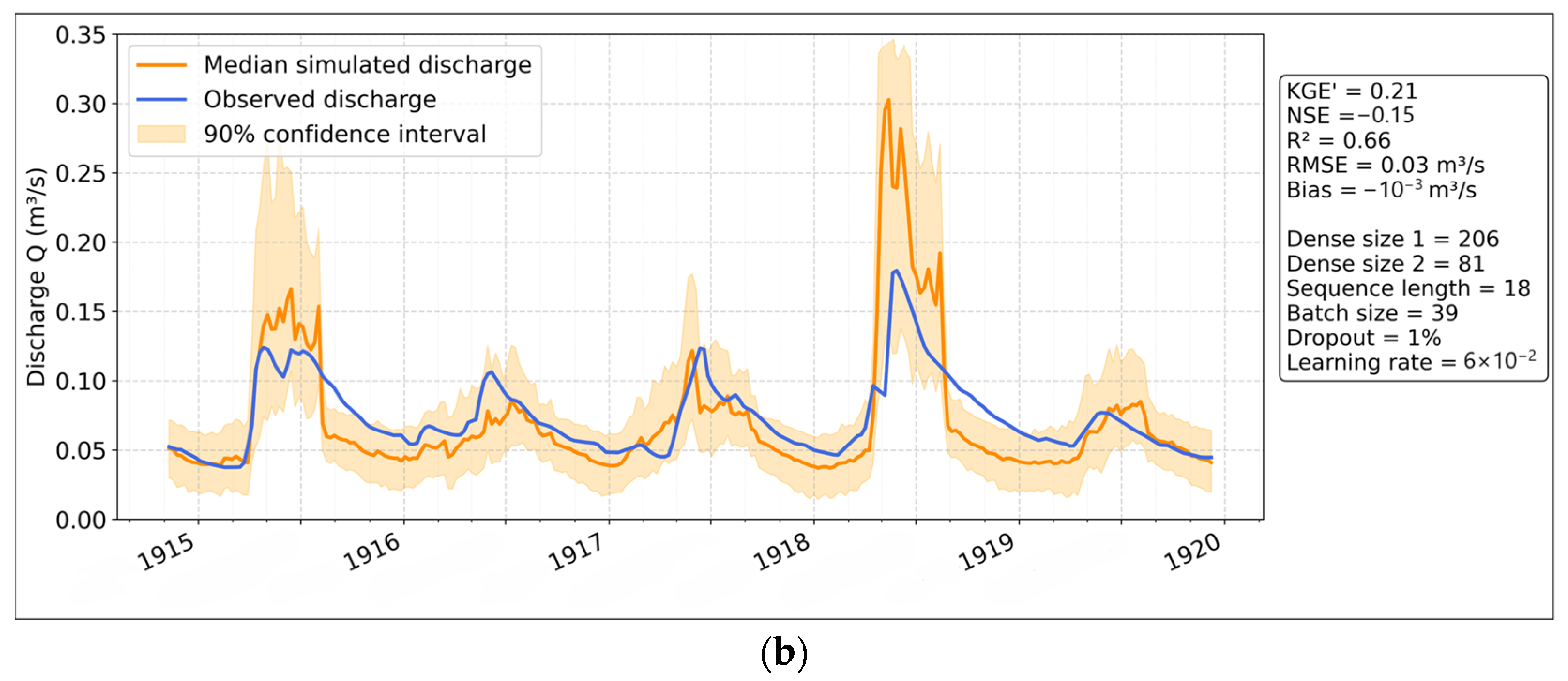
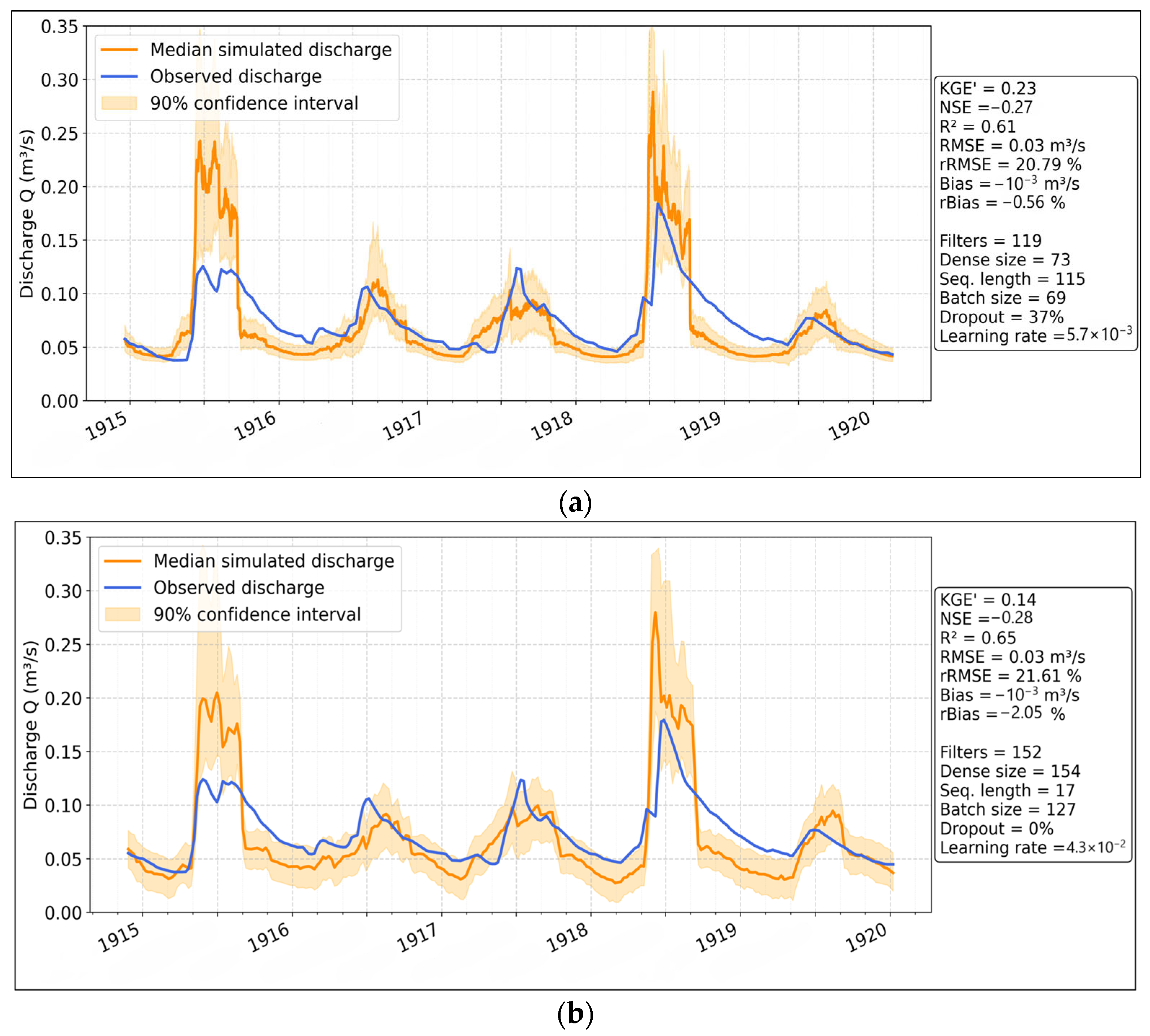
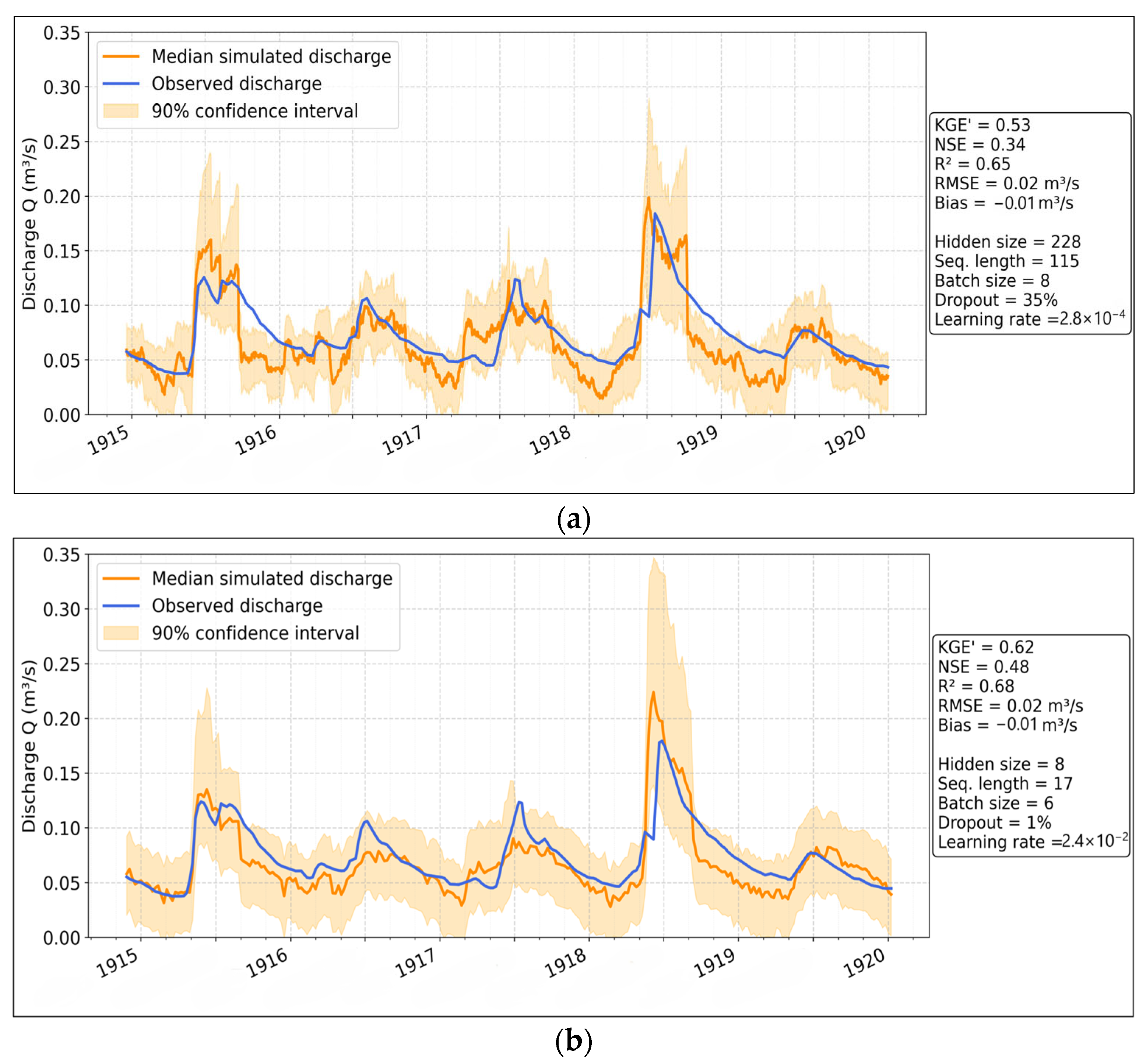
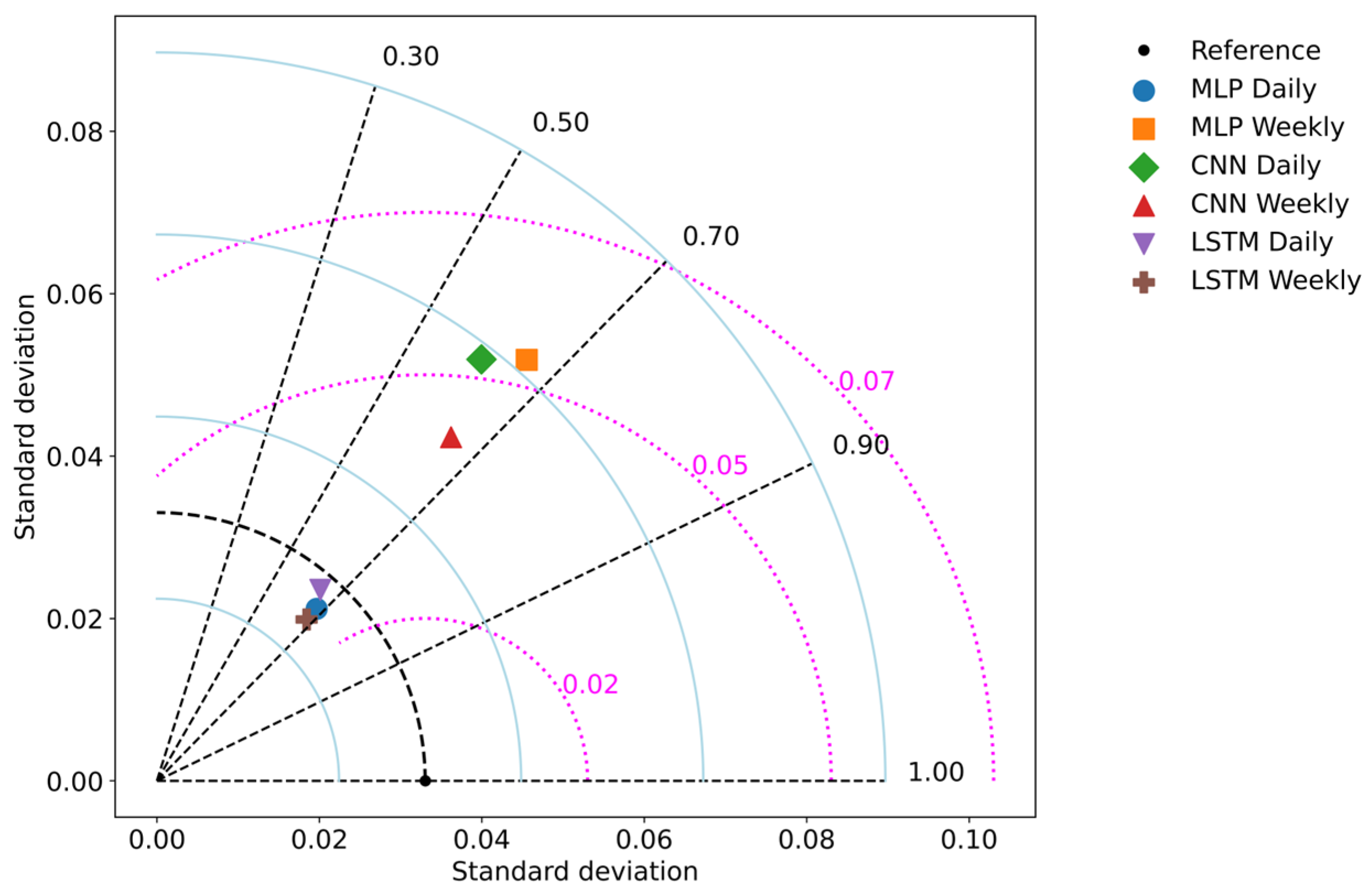
| Data | Observation Period | Gaps Periods | Gap Filling Method | Comments |
|---|---|---|---|---|
| Rainfall | 1915 to 1944 | 1929 to January 1930 | Linear Interpolation | Historical data (Data from National Archive: http://www.bnt.nat.tn:81/numerisation/khaldounia/periodiques/fr/E-Per-2850/E-Per-2850.htm, accessed on 19 January 2020) |
| Temperature Pressure | 1915 to 1944 | 1915; 1920 1931 to 1943 | Statistical Interpolation | Historical data |
| Discharge | 1915 to 1944 | - | - | Historical data in paper format |
| Station | Latitude | Longitude | Altitude (m NGT) |
|---|---|---|---|
| Zaghouan Contrôle | 36°23′45″ | 10°08′57″ | 218 |
| Zaghouan SM | 36°24′11″ | 10°08′41″ | 176 |
| Statistical Parameter | Values (m3/s) |
|---|---|
| Average discharge | 0.080 |
| Median discharge (Q2) | 0.062 |
| Minimum discharge | 0.002 |
| Maximum discharge | 1.140 |
| 25th percentile (Q1) | 0.042 |
| 75th percentile (Q3) | 0.088 |
| Standard deviation | 0.083 |
| Temporal Scale | Memory Effect Value (Days) |
|---|---|
| Daily | 109 |
| Weekly | 105 |
| Monthly | 108 |
| Temporal Scale | Lag with High Cross-Correlation Coefficient r (Days) |
|---|---|
| Daily | 55 |
| Weekly | 56 |
| Monthly | 30 |
| Temporal Scale | Lag (Days) | Kendall’s Coefficient (τ) | Significance Threshold |
|---|---|---|---|
| Daily | 114 | 0.0940 | 0.013 |
| Weekly | 126 | 0.150 | 0.034 |
| Monthly | 120 | 0.230 | 0.072 |
| Model | Temporal Scale | Sequence Length (in Days) | Batch Size | Dropout | Learning Rate |
|---|---|---|---|---|---|
| MLP | Daily | (100 to 130) | (16, 256) | (0, 0.5) | (1 × 105, 1 × 101) |
| Weekly | (13 to 19) | (8, 256) | |||
| CNN | Daily | (100 to 130) | (8, 256) | ||
| Weekly | (13 to 19) | (4, 256) | |||
| LSTM | Daily | (100 to 130) | (8, 256) | ||
| Weekly | (13, 19) | (4, 256) |
| Model | Best Iteration Number | Best Target |
|---|---|---|
| MLP Daily | 11 | 0.783 |
| MLP Weekly | 26 | 0.855 |
| CNN Daily | 1 | 0.858 |
| CNN Weekly | 40 | 0.831 |
| LSTM Daily | 16 | 0.701 |
| LSTM Weekly | 25 | 0.678 |
| Model | Temporal Scale | Sequence Length (in Days) | Batch Size | Dropout | Learning Rate |
|---|---|---|---|---|---|
| MLP | Daily | 116 | 40 | 0.207 | 5 × 10−3 |
| Weekly | 126 | 39 | 0.013 | 5 × 10−2 | |
| CNN | Daily | 115 | 69 | 0.37 | 5 × 10−3 |
| Weekly | 119 | 127 | 7 × 10−3 | 4 × 10−2 | |
| LSTM | Daily | 115 | 8 | 0.3 | 2 × 10−4 |
| Weekly | 119 | 6 | 0.01 | 2 × 10−2 |
| Model | Temporal Scale | KGE′ | NSE | R2 | Score |
|---|---|---|---|---|---|
| MLP | Daily | 0.81 | 0.62 | 0.68 | 0.7 |
| Weekly | 0.21 | −0.15 | 0.66 | 0.2 | |
| CNN | Daily | 0.23 | −0.27 | 0.61 | 0.2 |
| Weekly | 0.14 | −0.28 | 0.65 | 0.2 | |
| LSTM | Daily | 0.53 | 0.34 | 0.65 | 0.5 |
| Weekly | 0.62 | 0.48 | 0.68 | 0.6 |
Disclaimer/Publisher’s Note: The statements, opinions and data contained in all publications are solely those of the individual author(s) and contributor(s) and not of MDPI and/or the editor(s). MDPI and/or the editor(s) disclaim responsibility for any injury to people or property resulting from any ideas, methods, instructions or products referred to in the content. |
© 2025 by the authors. Licensee MDPI, Basel, Switzerland. This article is an open access article distributed under the terms and conditions of the Creative Commons Attribution (CC BY) license (https://creativecommons.org/licenses/by/4.0/).
Share and Cite
Gargouri-Ellouze, E.; Ouedraogo, T.A.; Slama, F.; Taupin, J.-D.; Patris, N.; Bouhlila, R. Modeling the Dynamics of the Jebel Zaghouan Karst Aquifer Using Artificial Neural Networks: Toward Improved Management of Vulnerable Water Resources. Hydrology 2025, 12, 250. https://doi.org/10.3390/hydrology12100250
Gargouri-Ellouze E, Ouedraogo TA, Slama F, Taupin J-D, Patris N, Bouhlila R. Modeling the Dynamics of the Jebel Zaghouan Karst Aquifer Using Artificial Neural Networks: Toward Improved Management of Vulnerable Water Resources. Hydrology. 2025; 12(10):250. https://doi.org/10.3390/hydrology12100250
Chicago/Turabian StyleGargouri-Ellouze, Emna, Tegawende Arnaud Ouedraogo, Fairouz Slama, Jean-Denis Taupin, Nicolas Patris, and Rachida Bouhlila. 2025. "Modeling the Dynamics of the Jebel Zaghouan Karst Aquifer Using Artificial Neural Networks: Toward Improved Management of Vulnerable Water Resources" Hydrology 12, no. 10: 250. https://doi.org/10.3390/hydrology12100250
APA StyleGargouri-Ellouze, E., Ouedraogo, T. A., Slama, F., Taupin, J.-D., Patris, N., & Bouhlila, R. (2025). Modeling the Dynamics of the Jebel Zaghouan Karst Aquifer Using Artificial Neural Networks: Toward Improved Management of Vulnerable Water Resources. Hydrology, 12(10), 250. https://doi.org/10.3390/hydrology12100250










